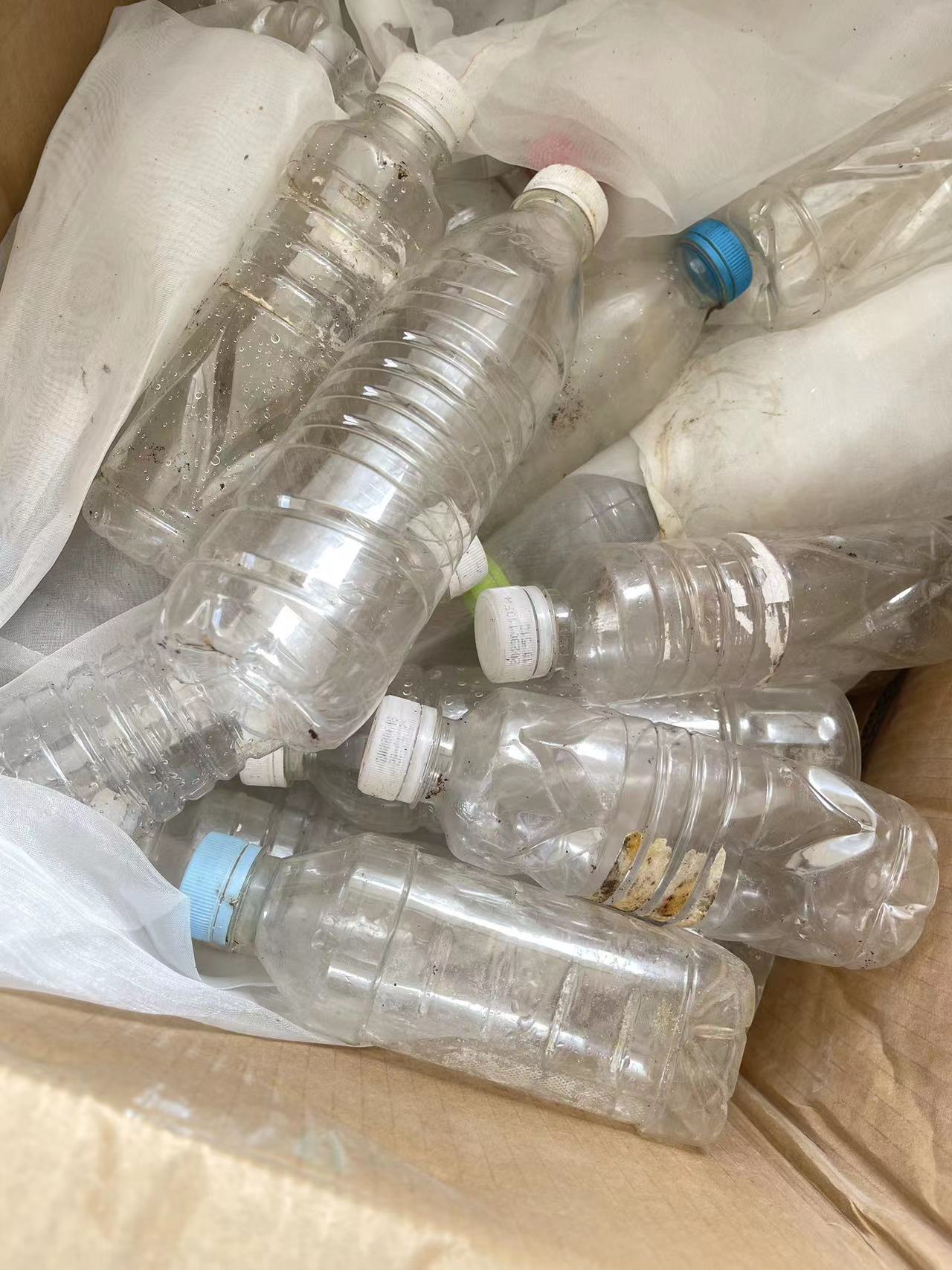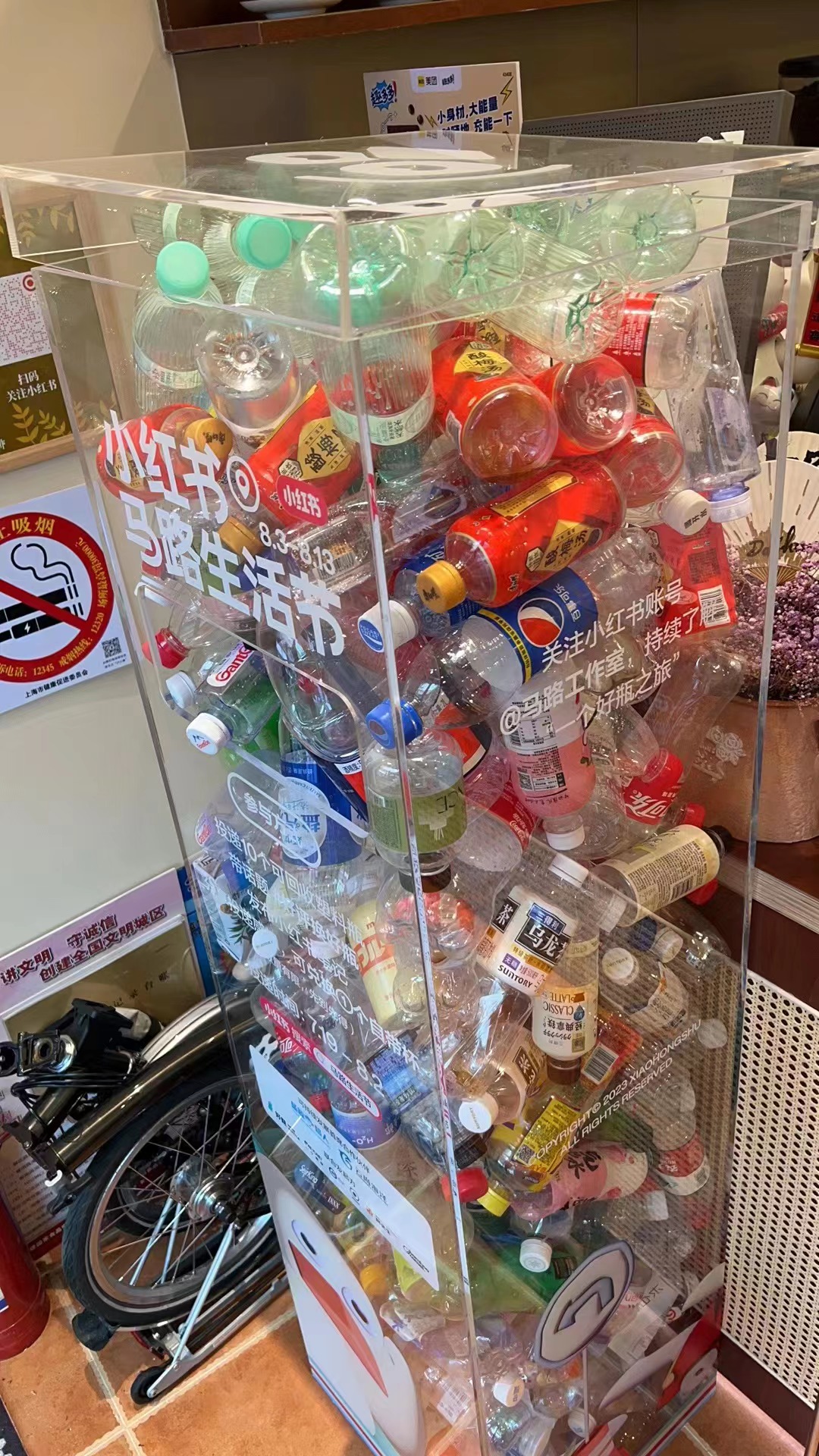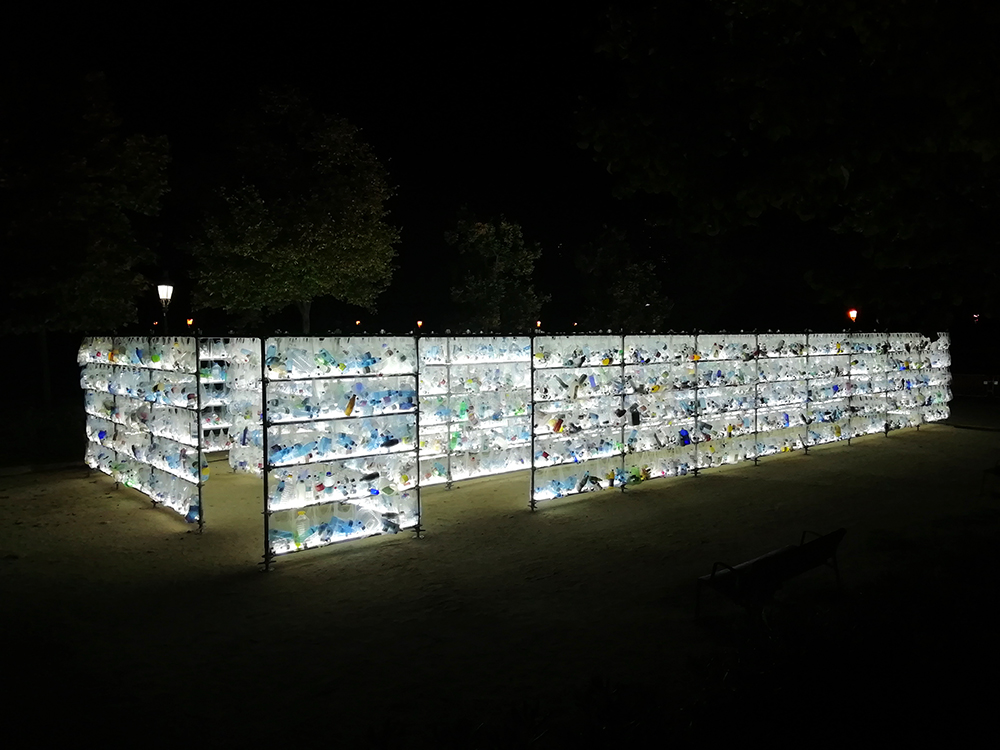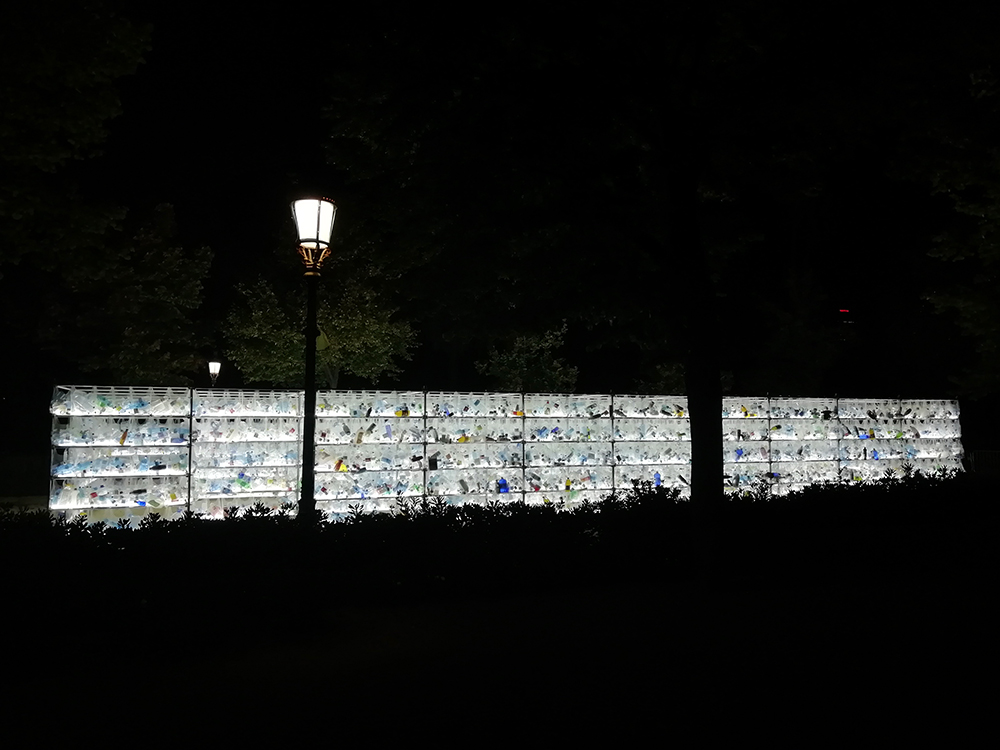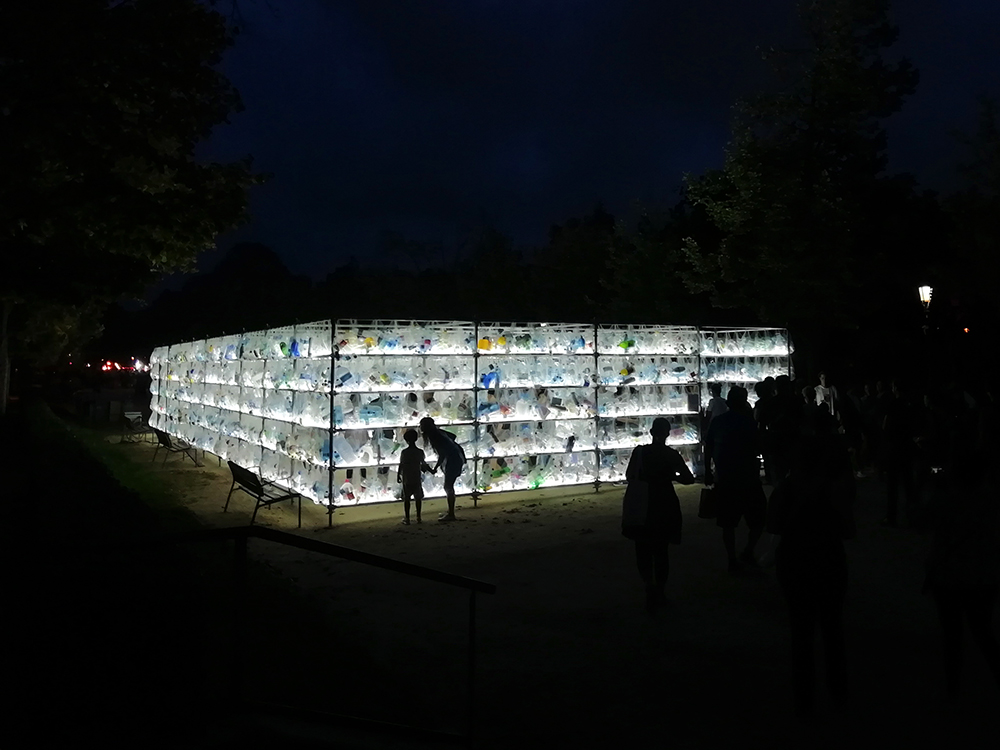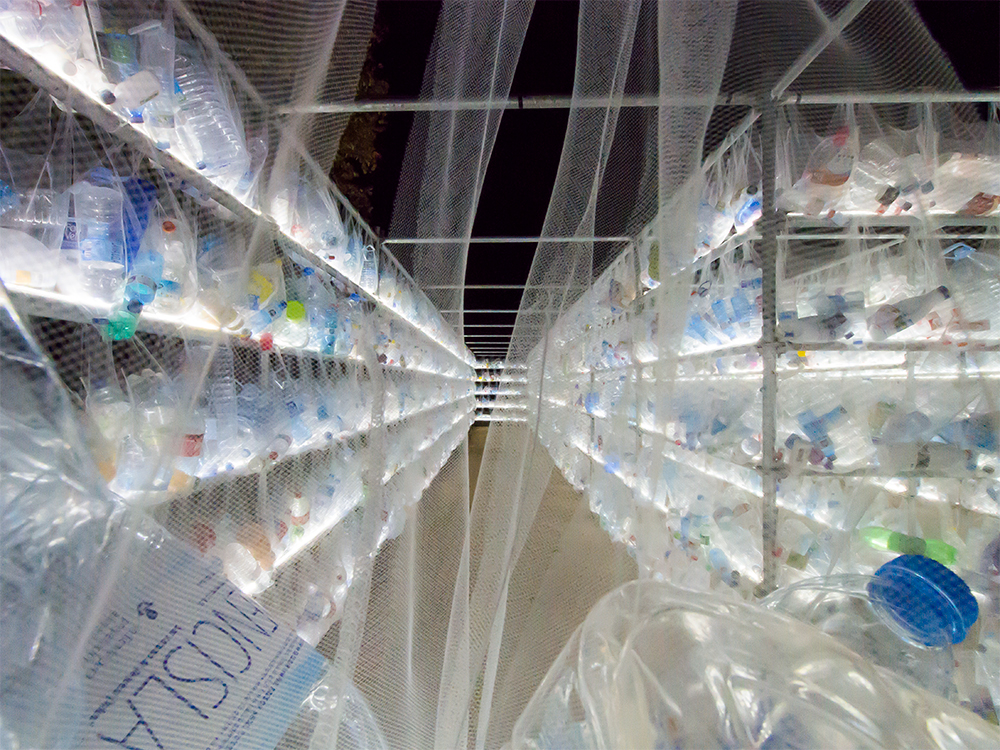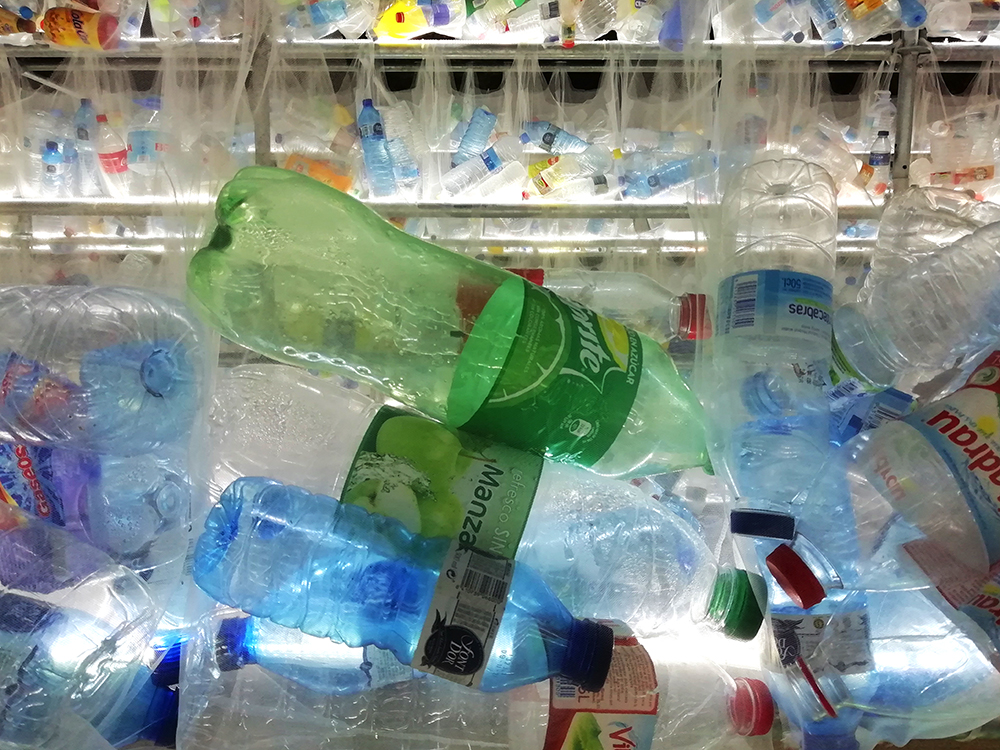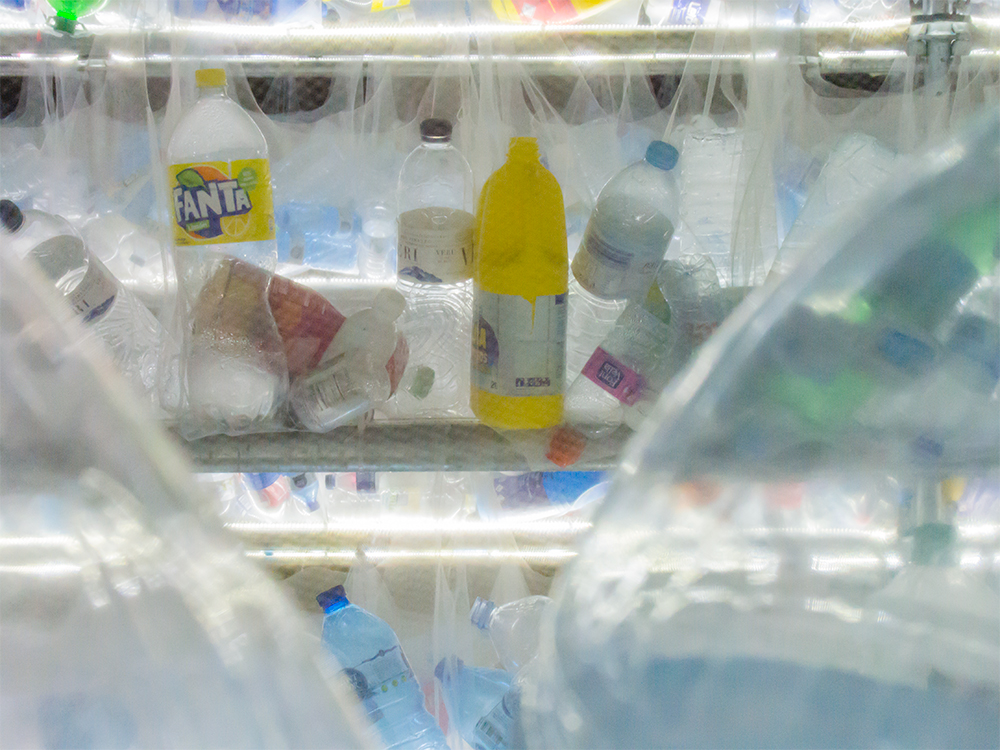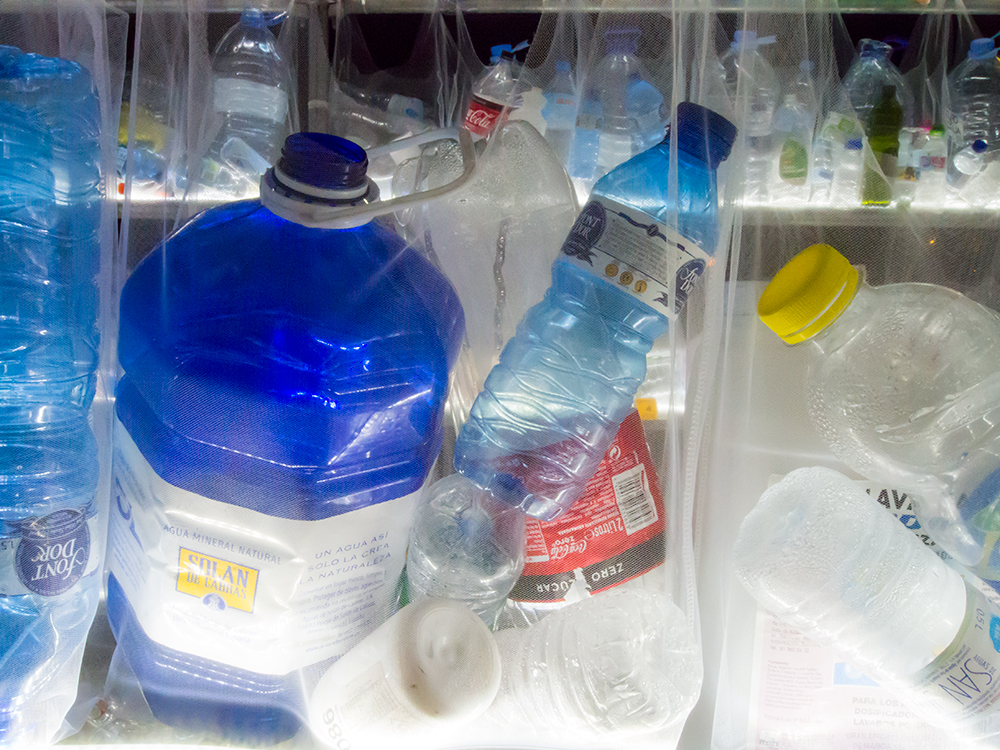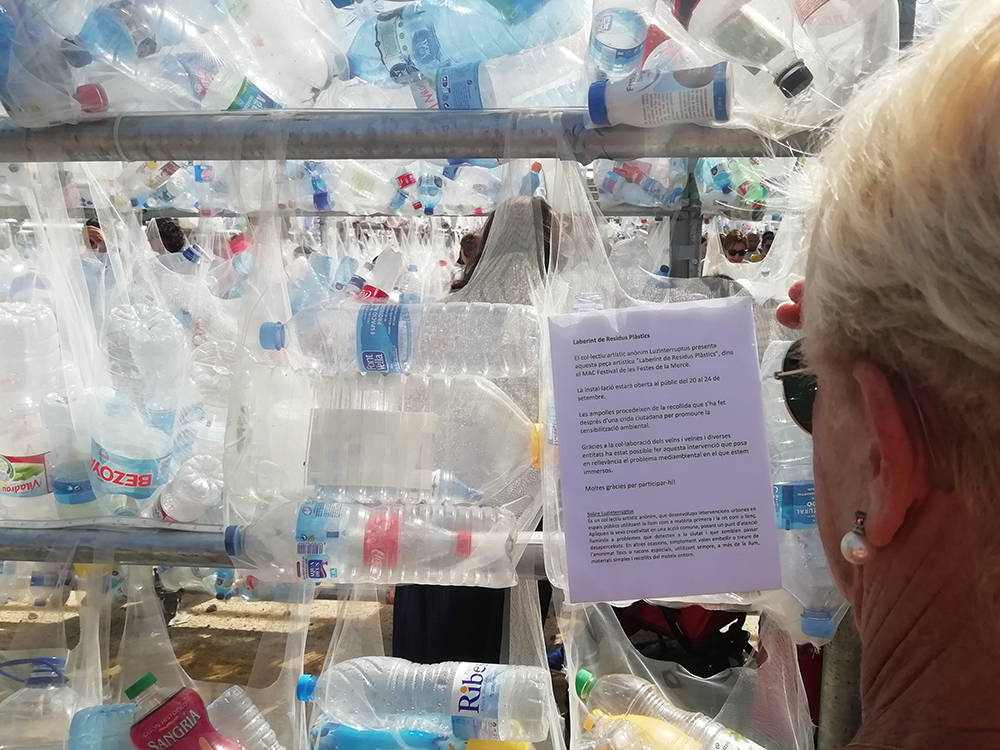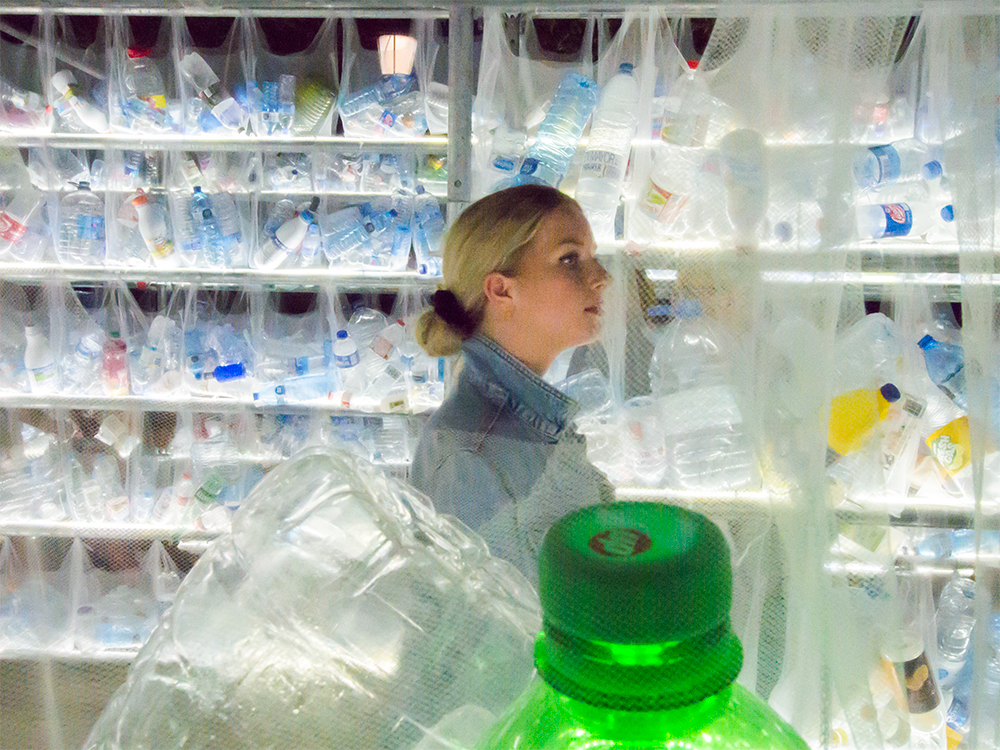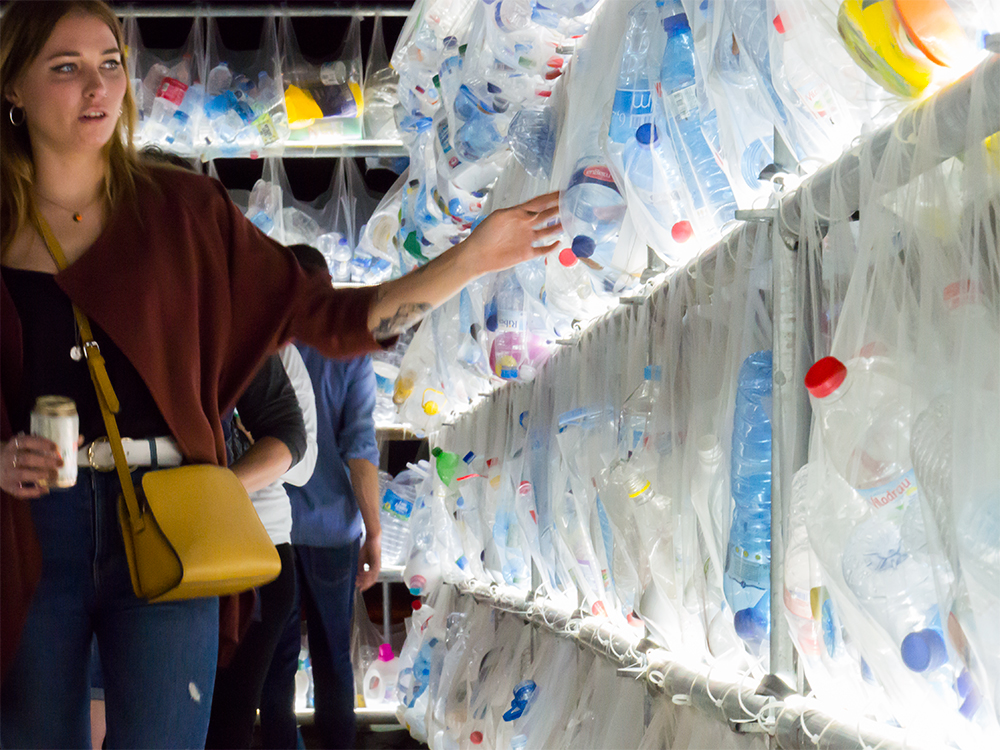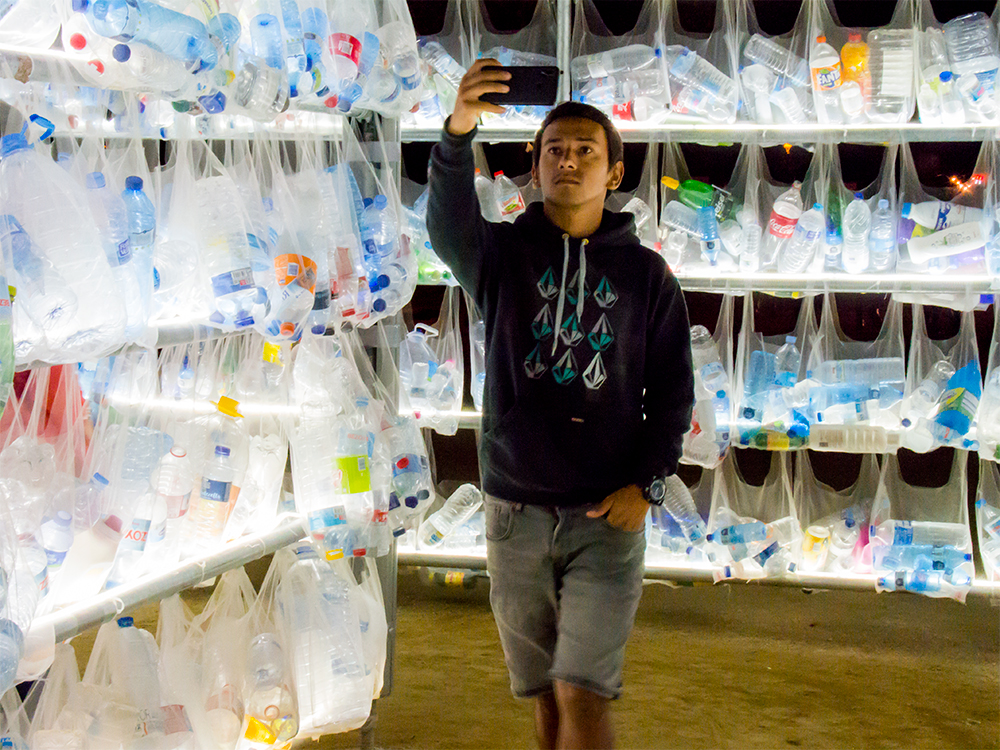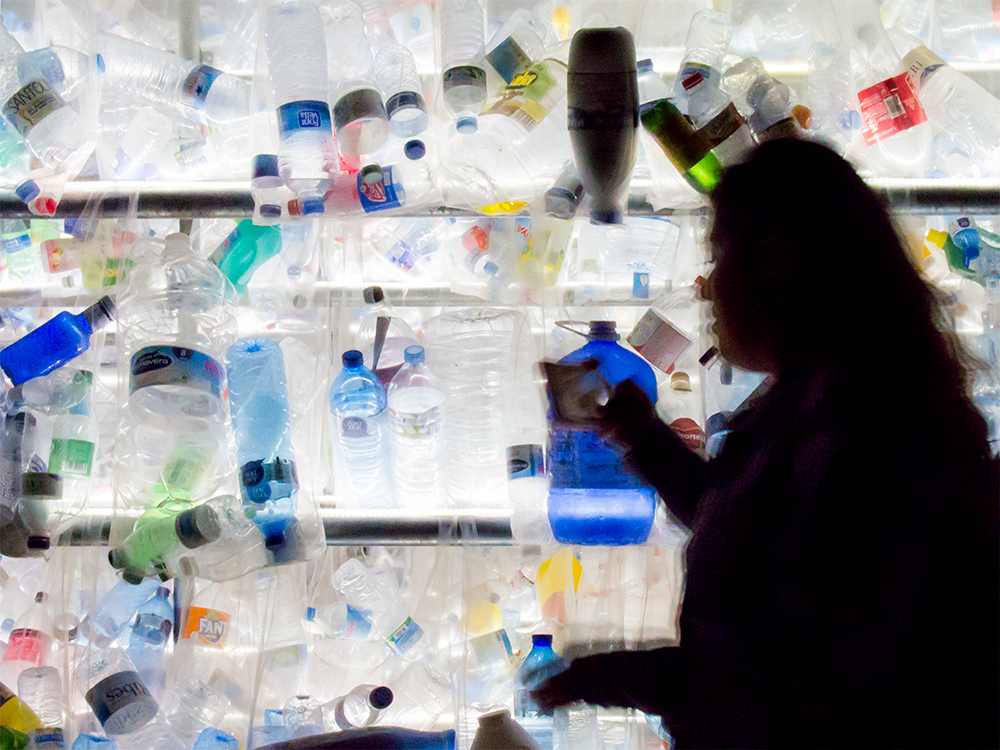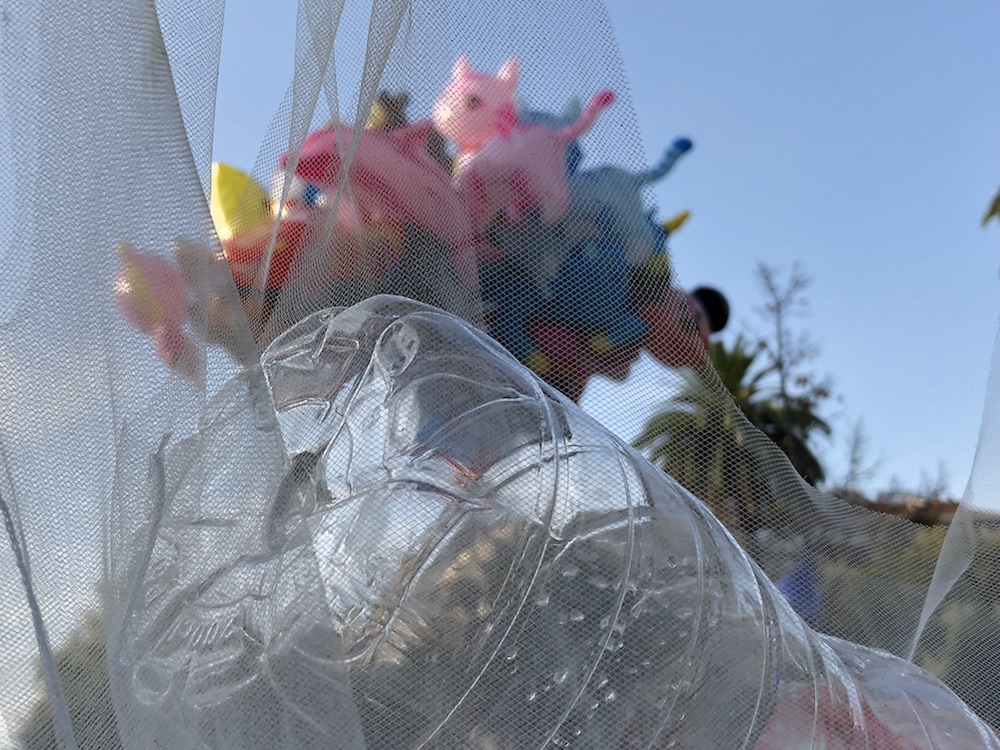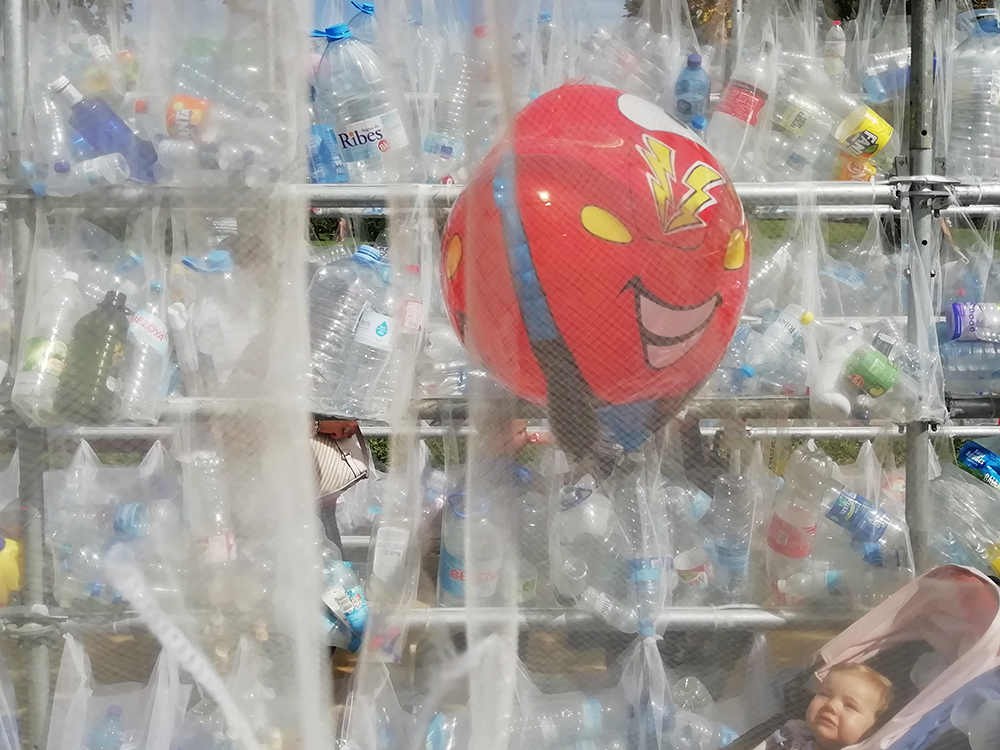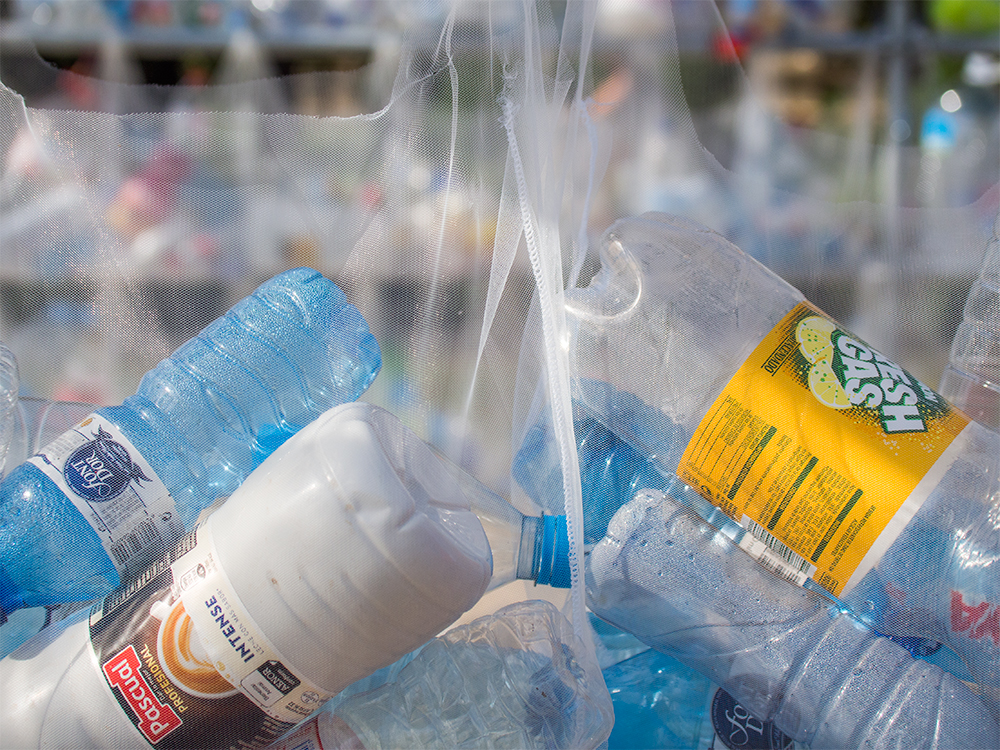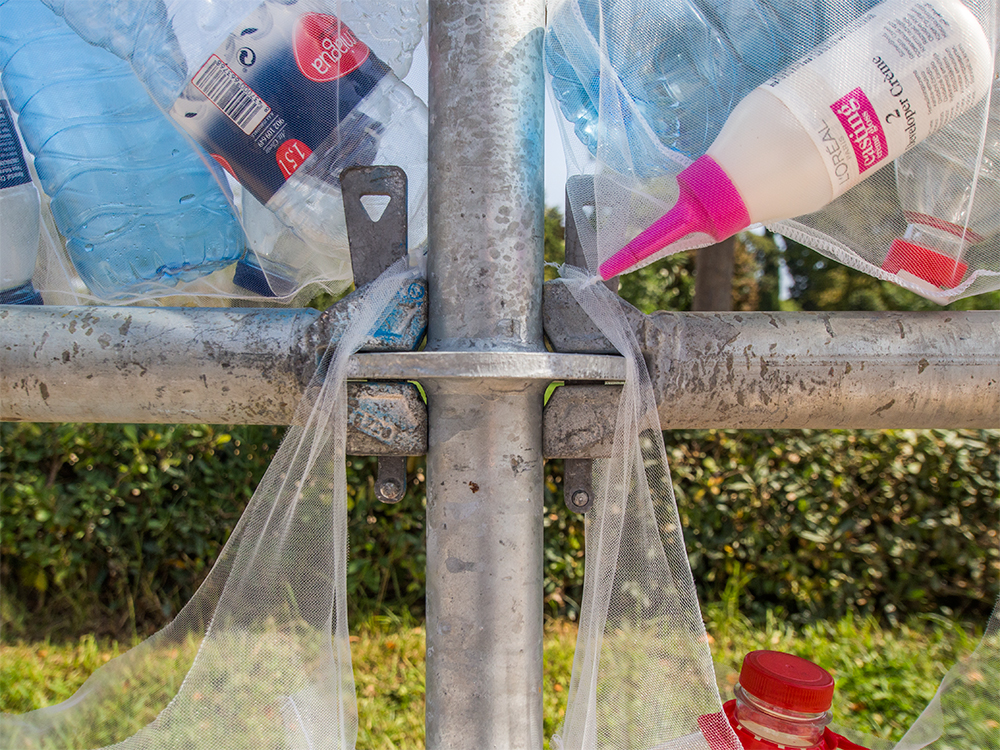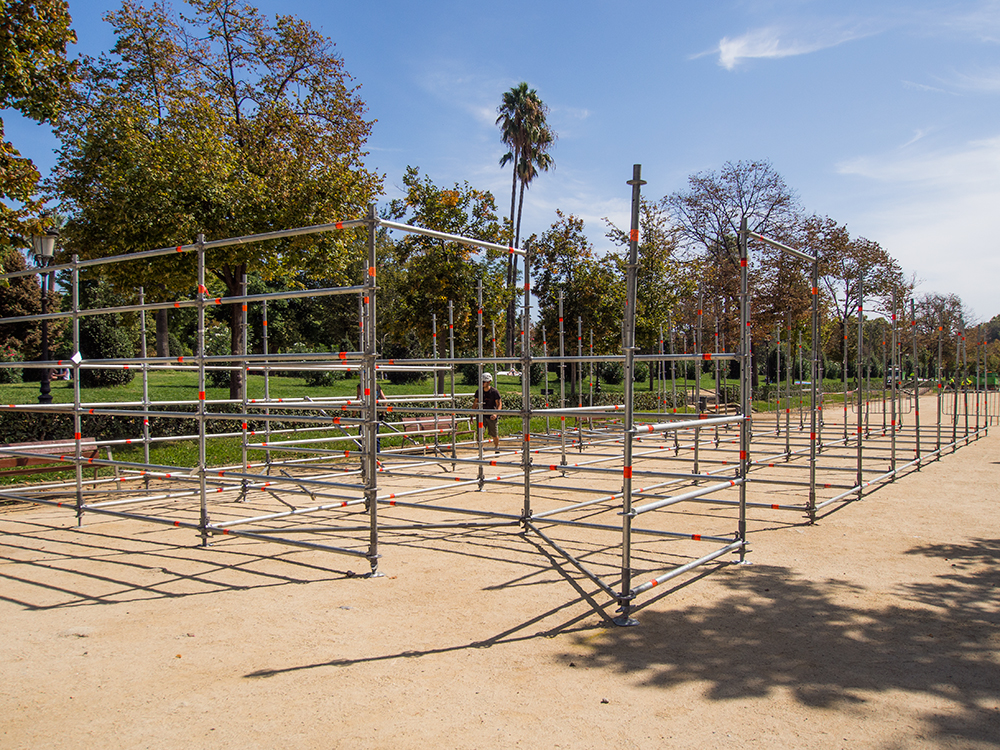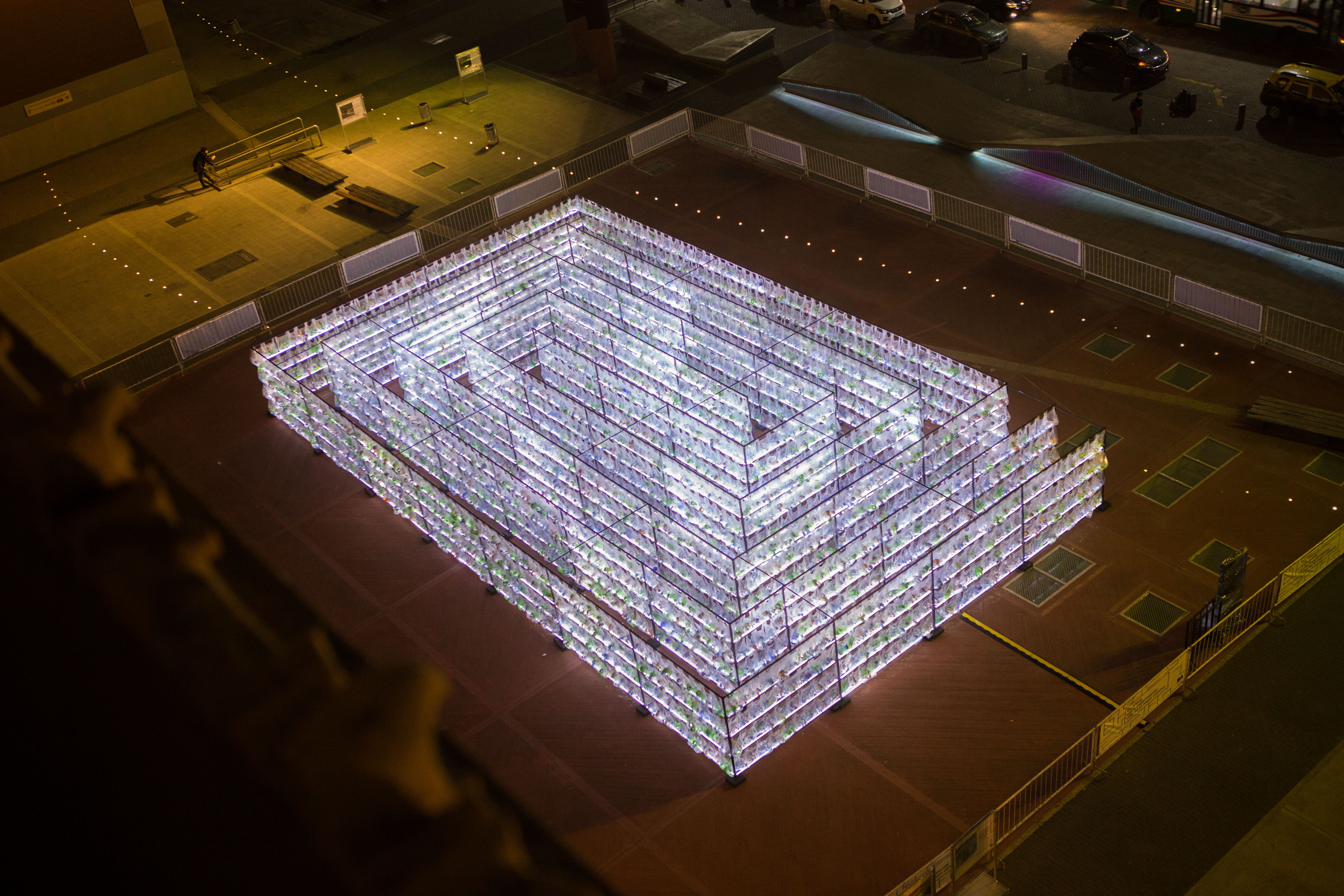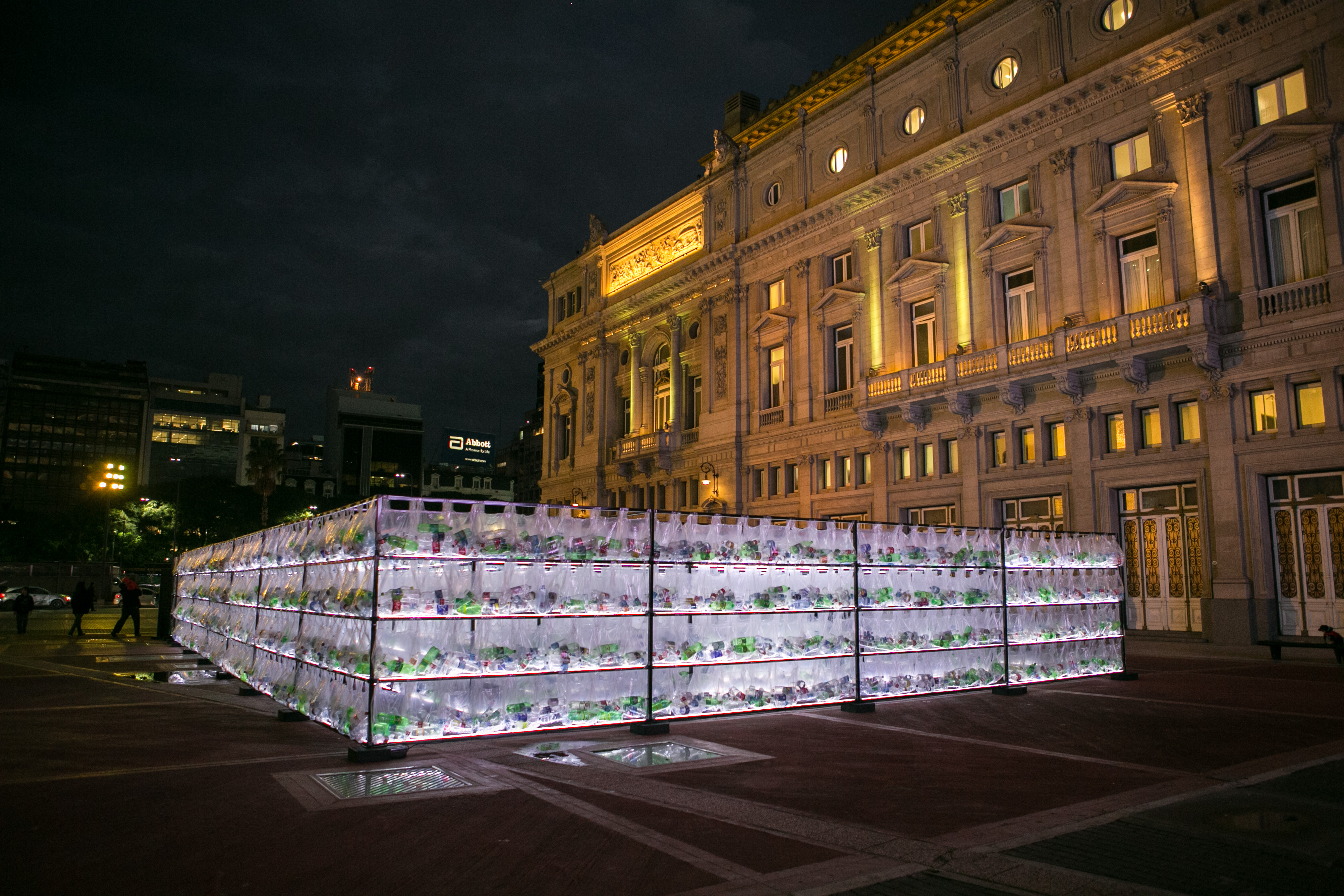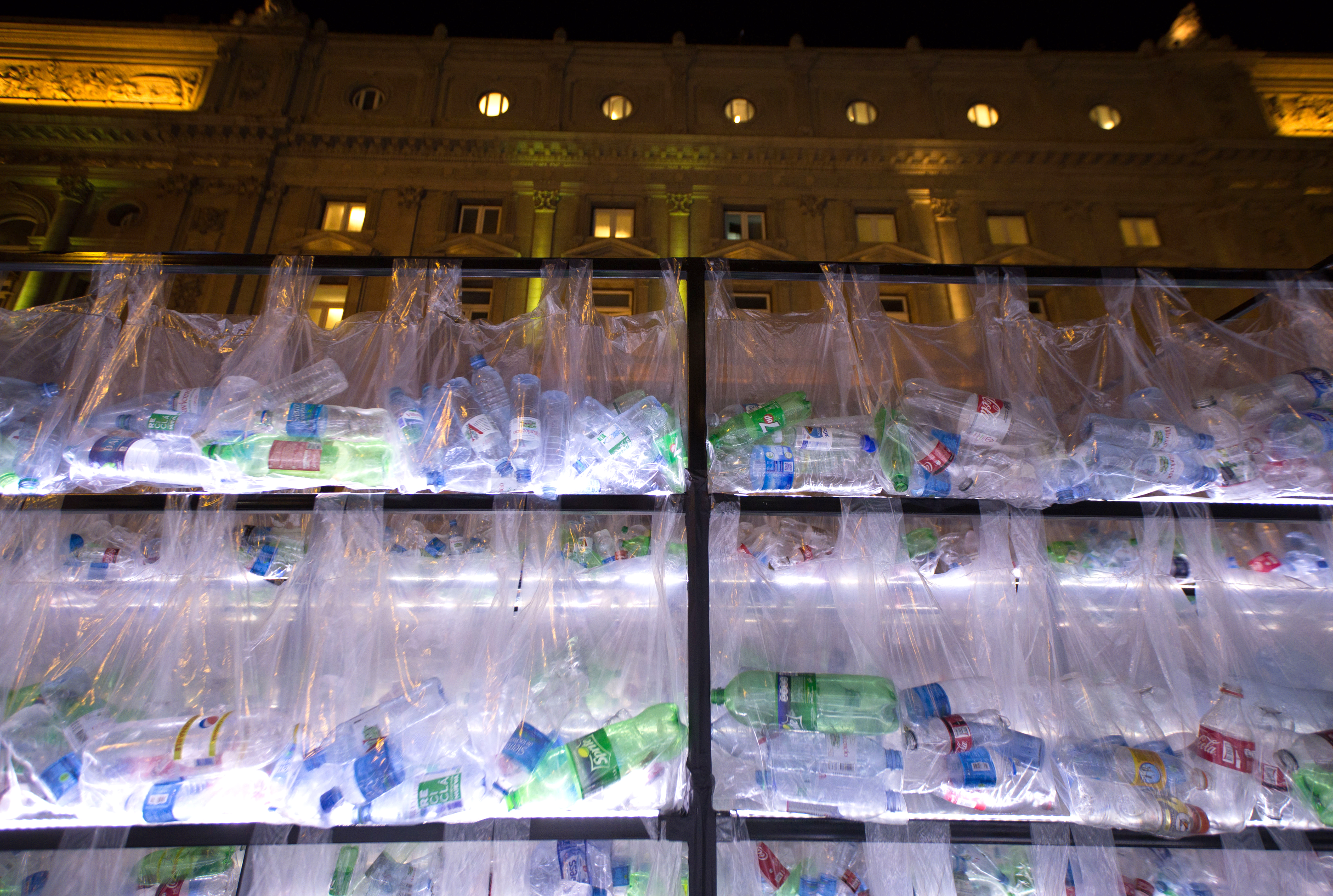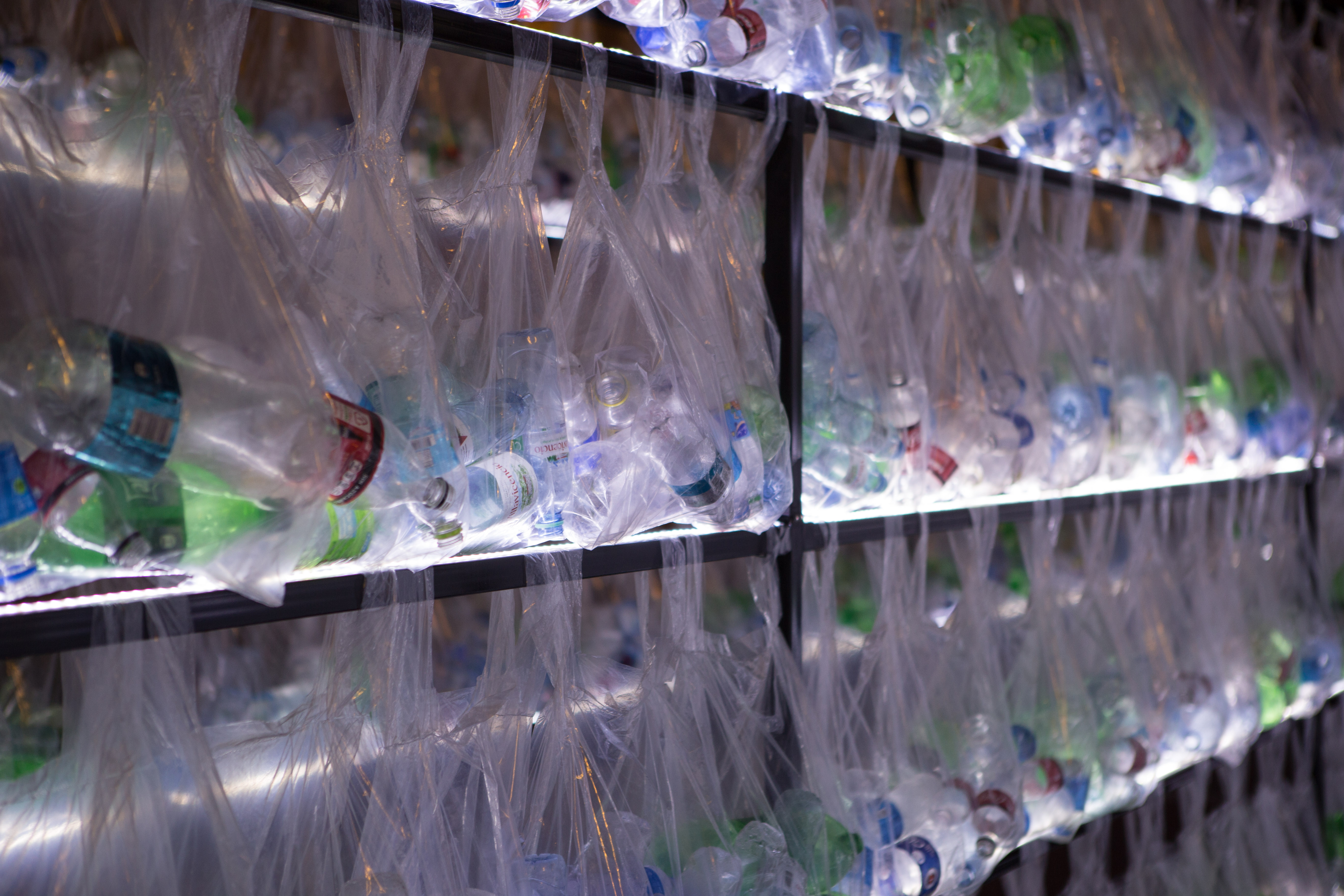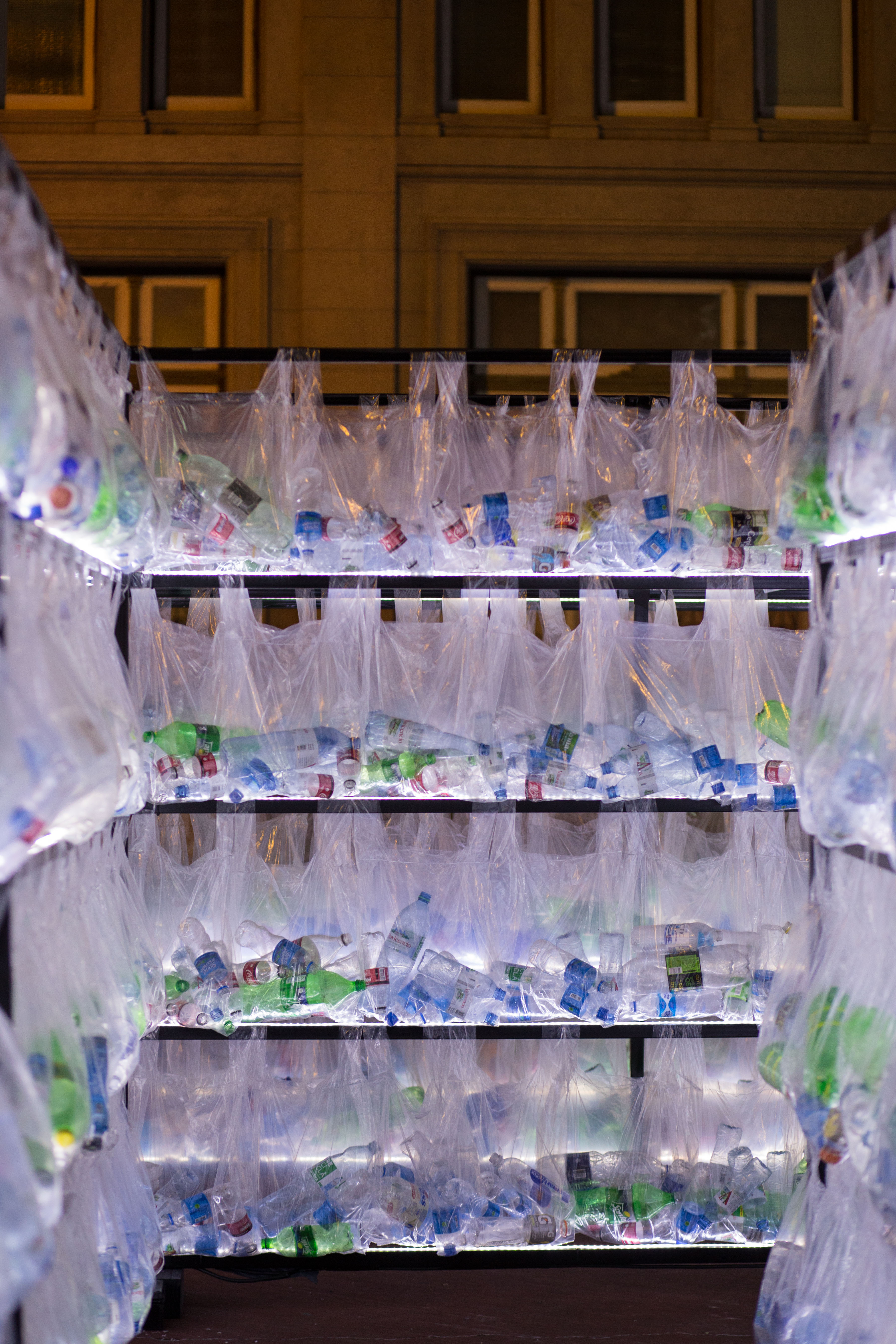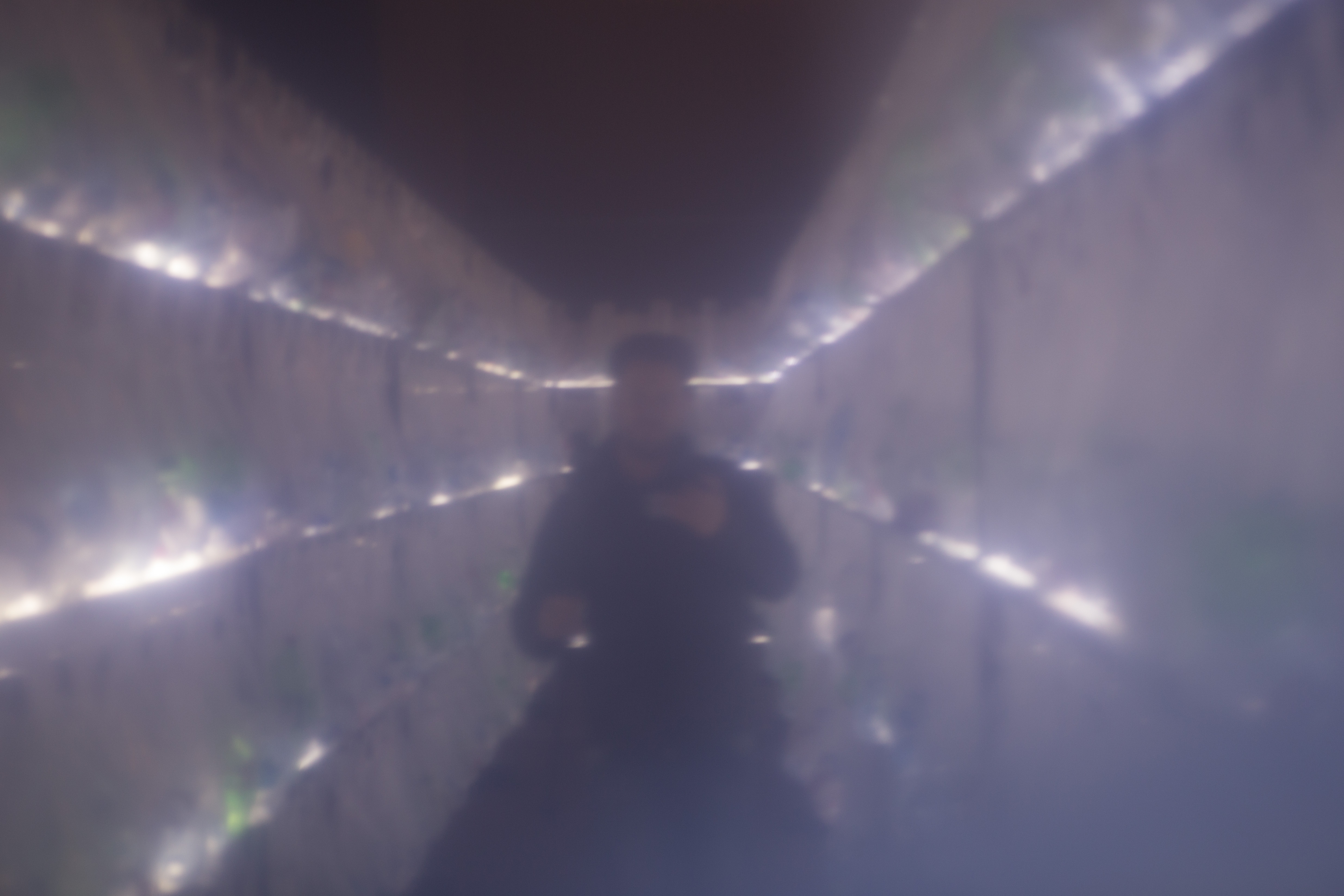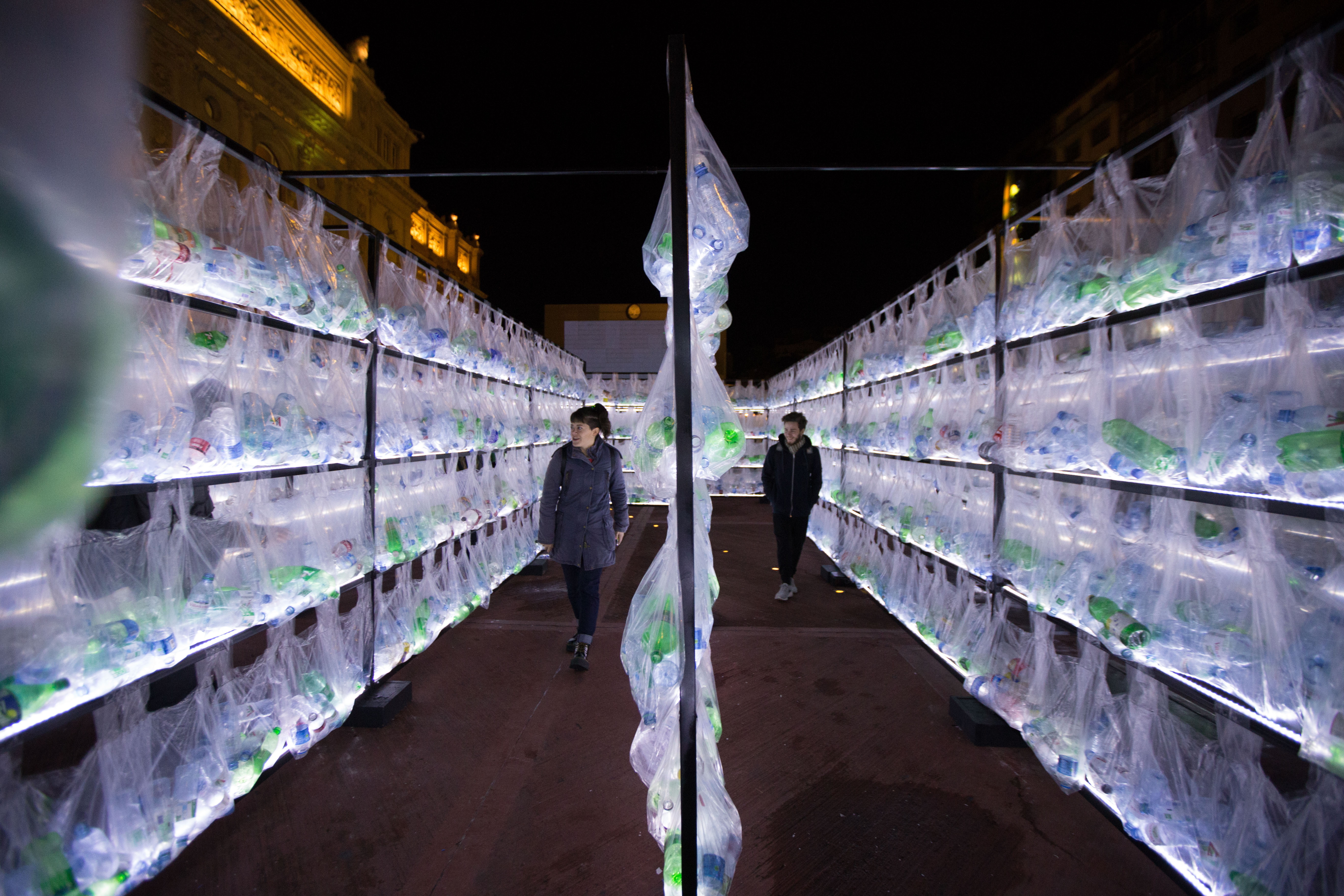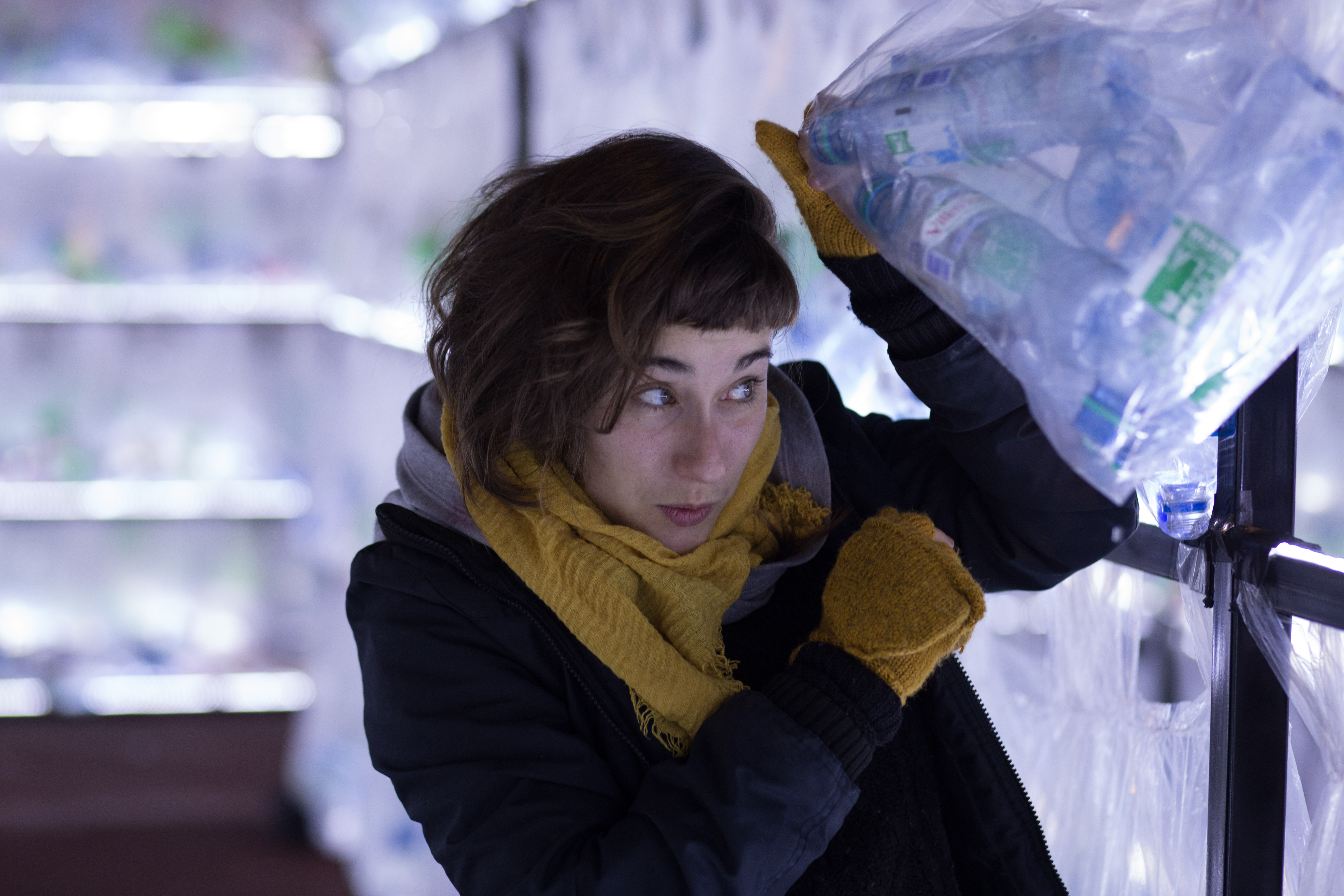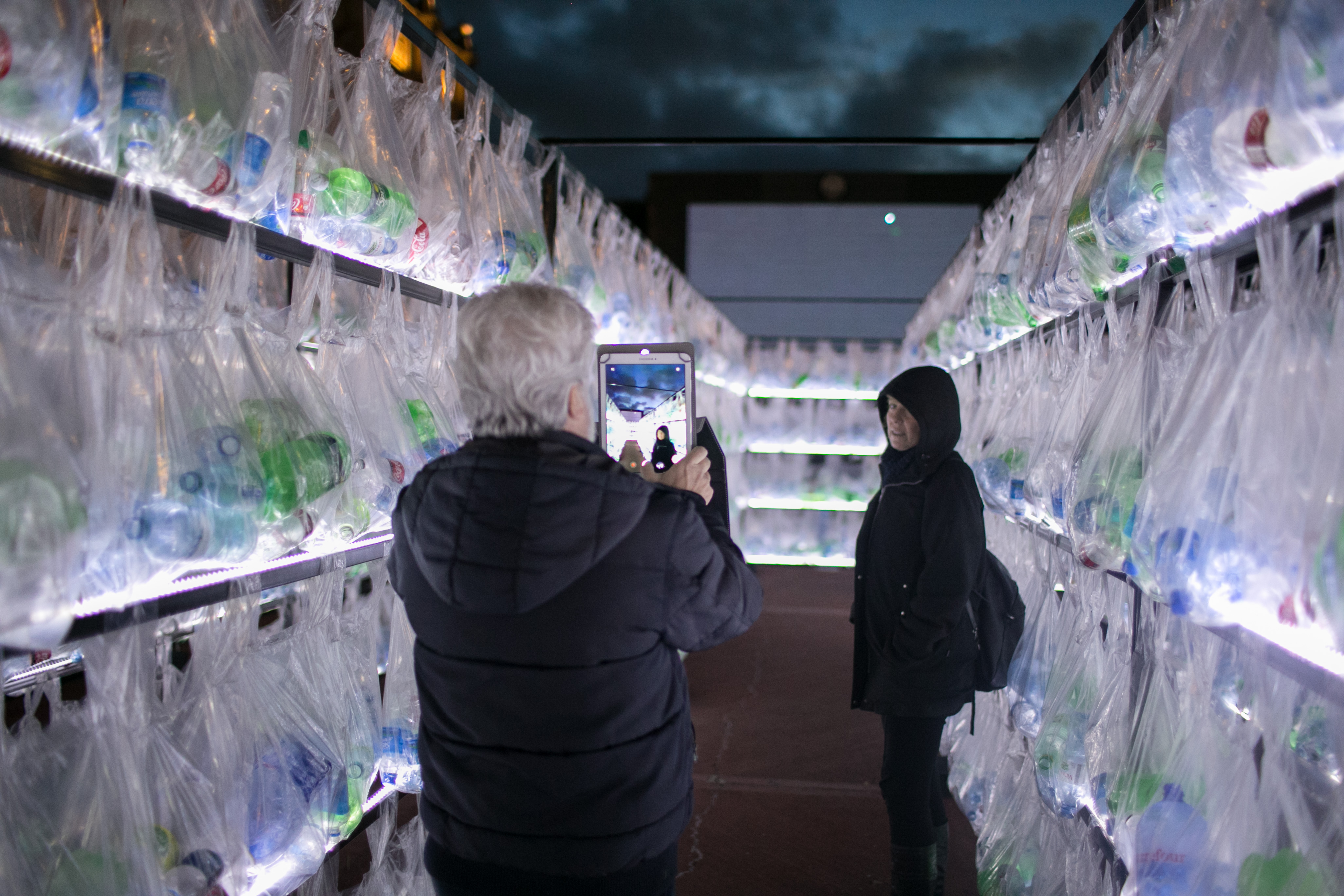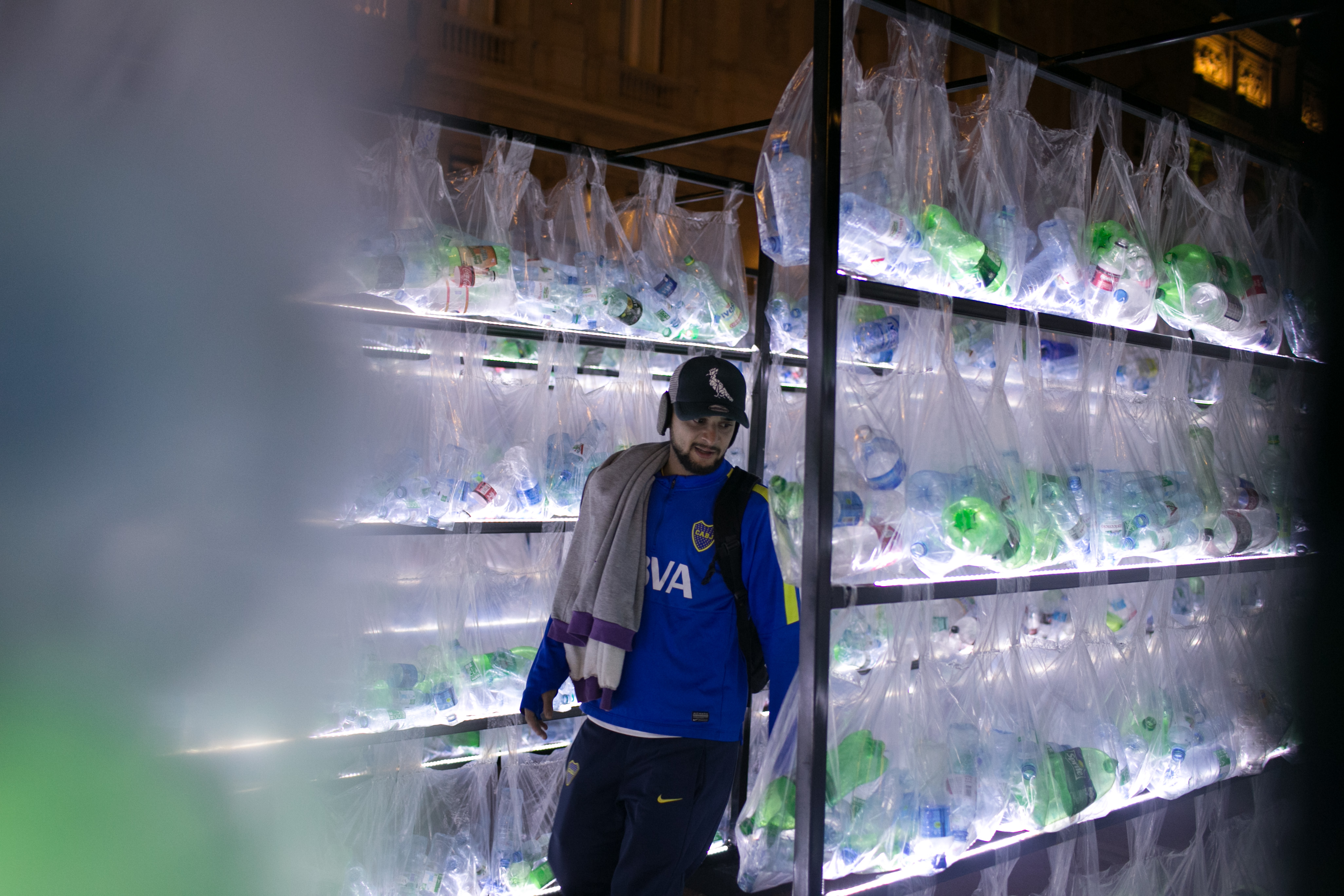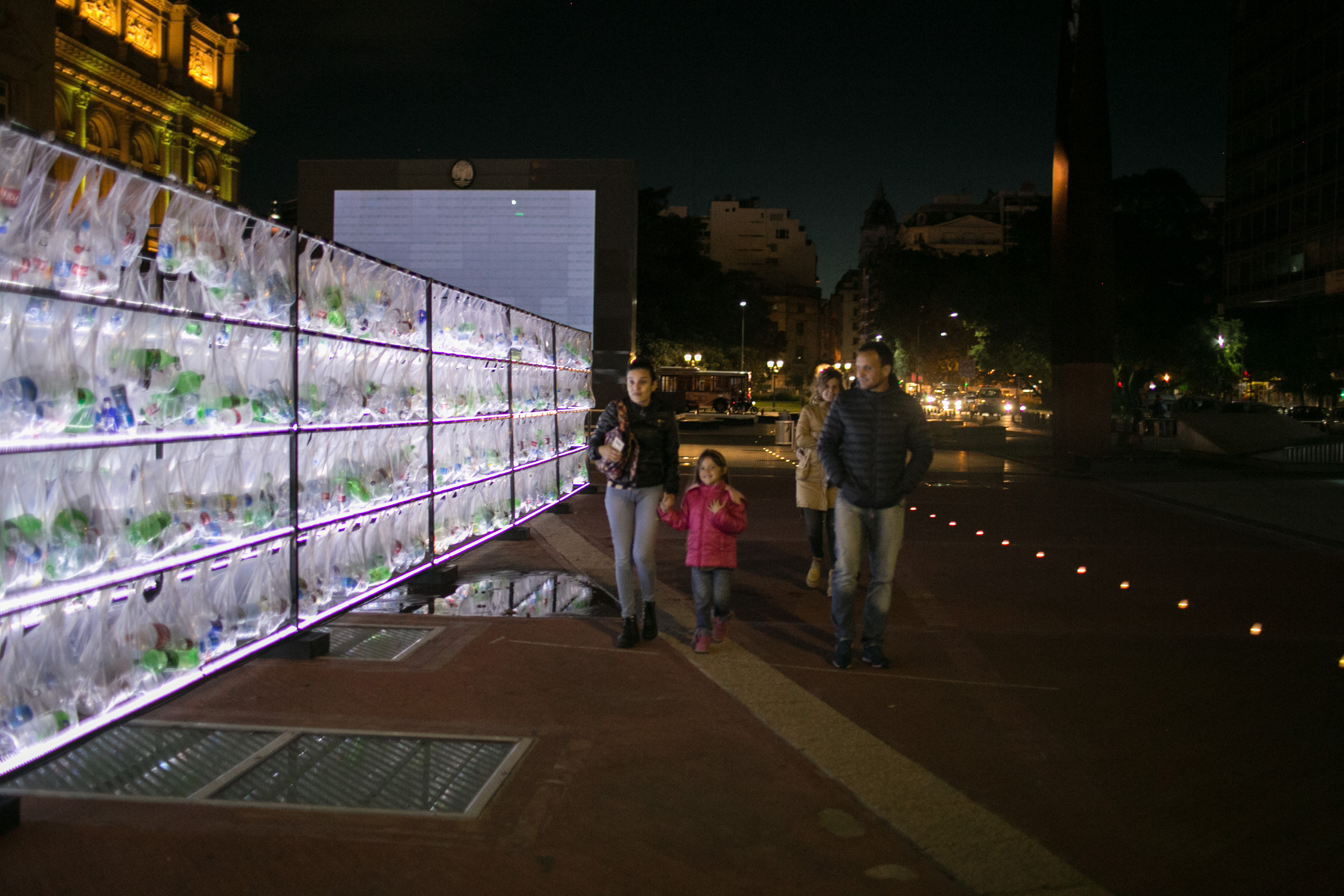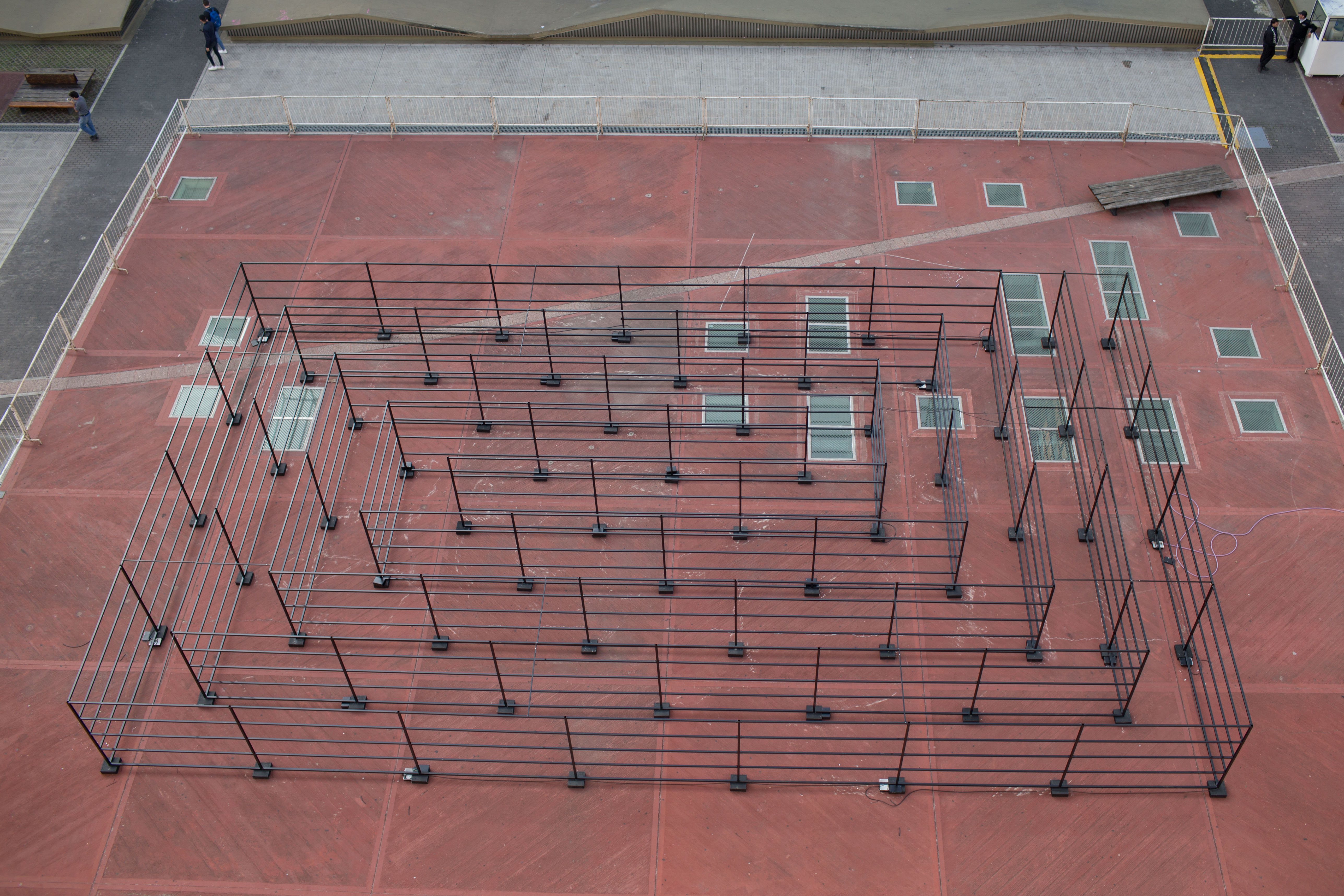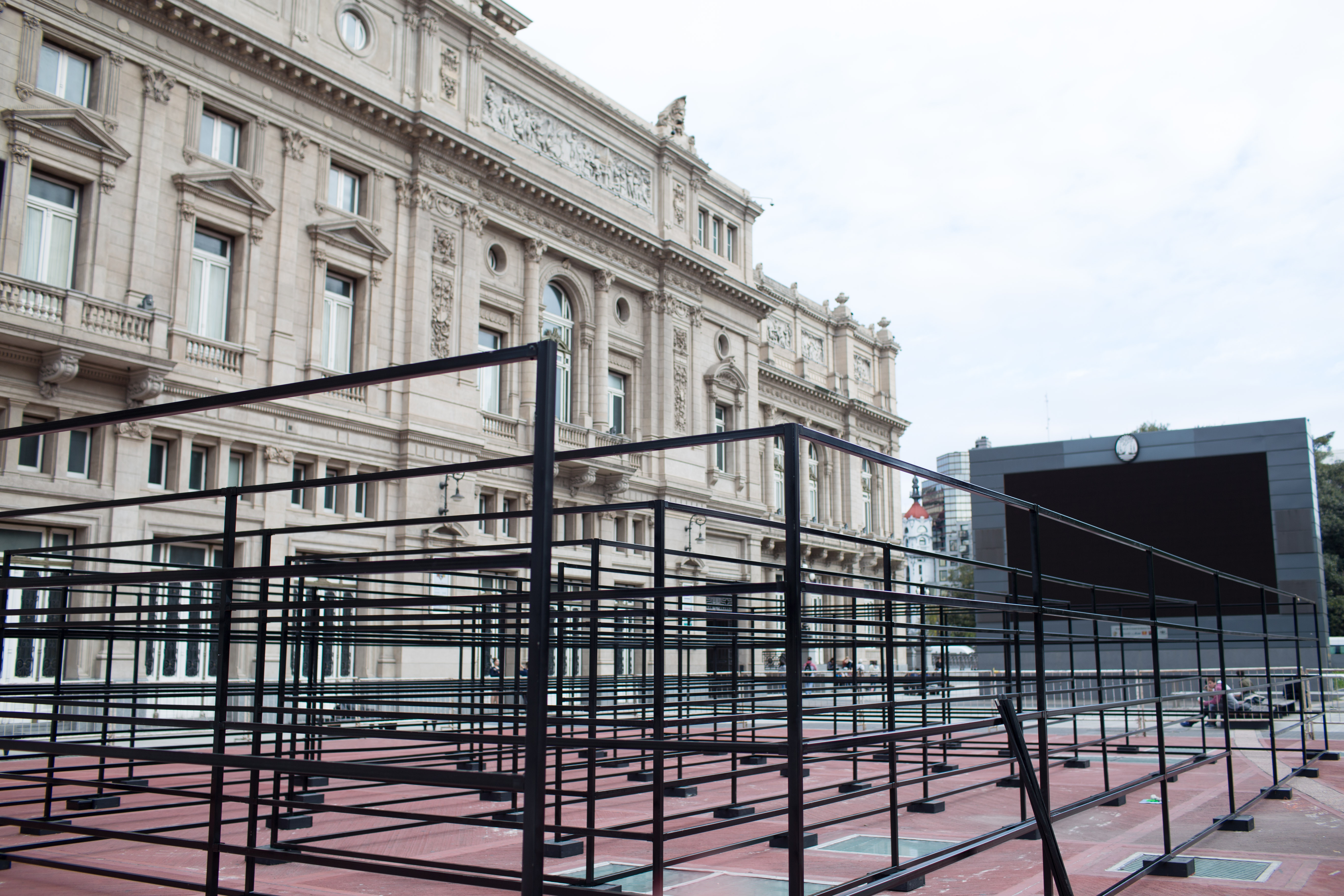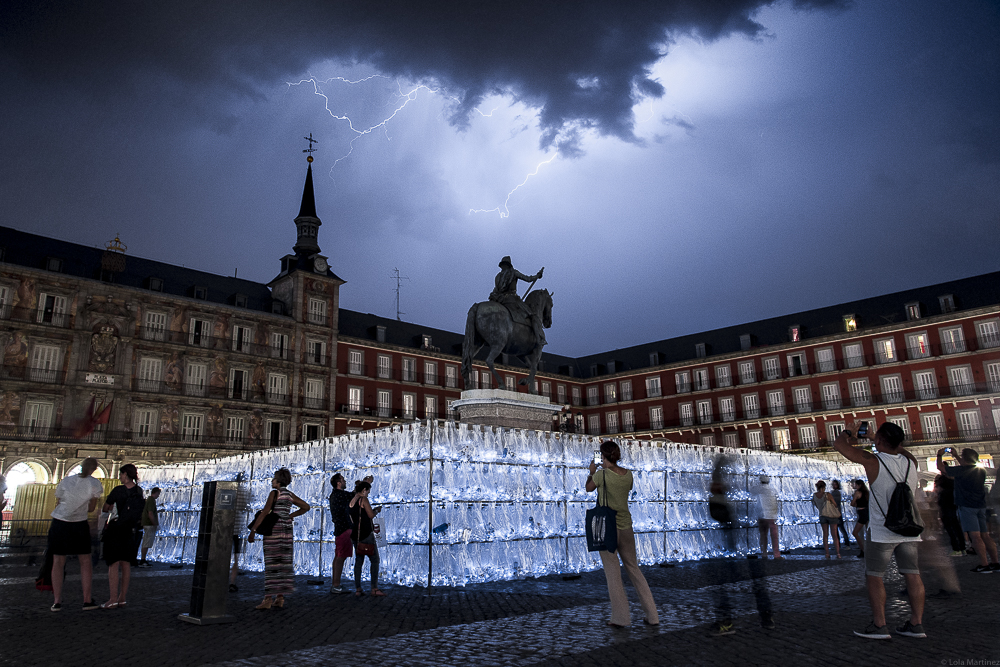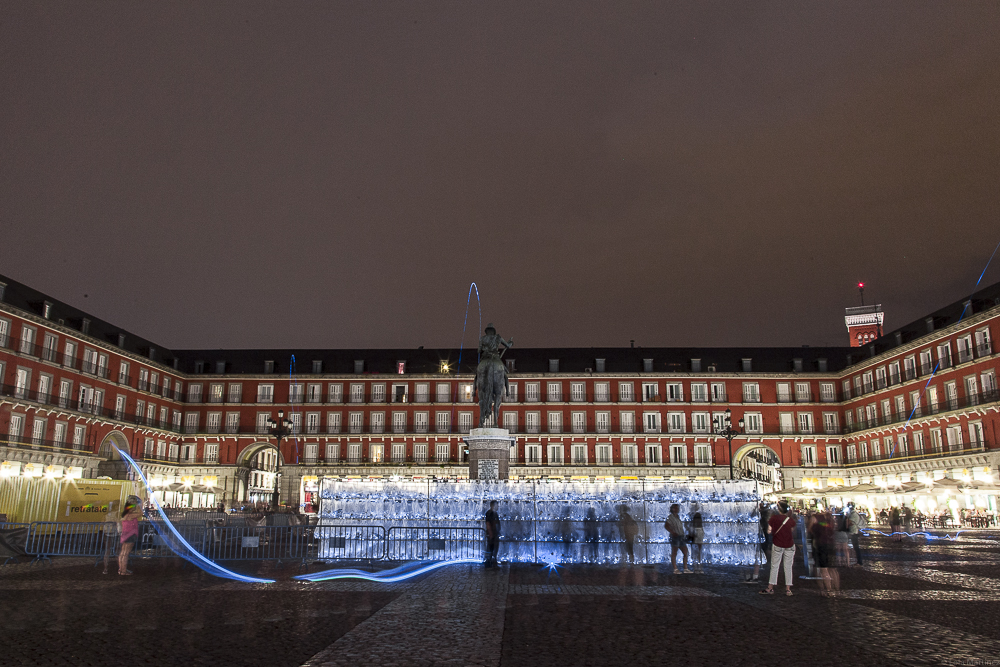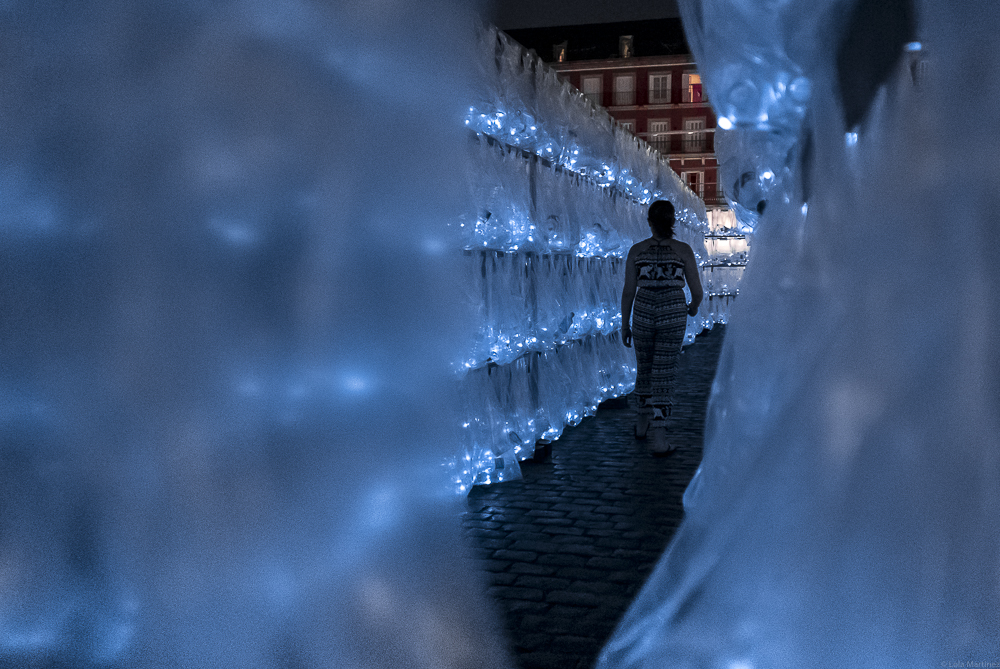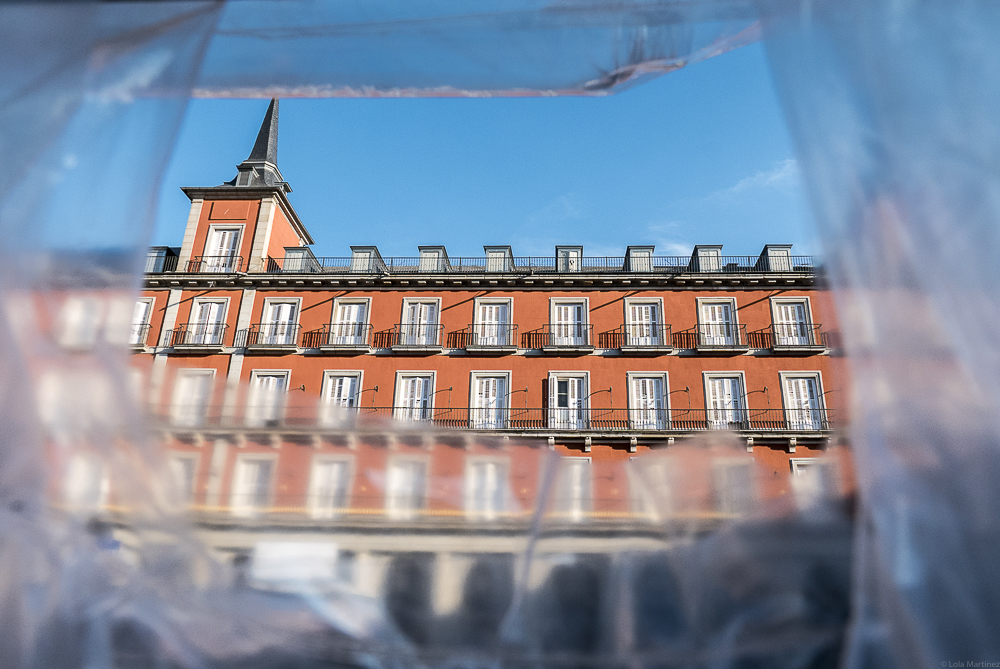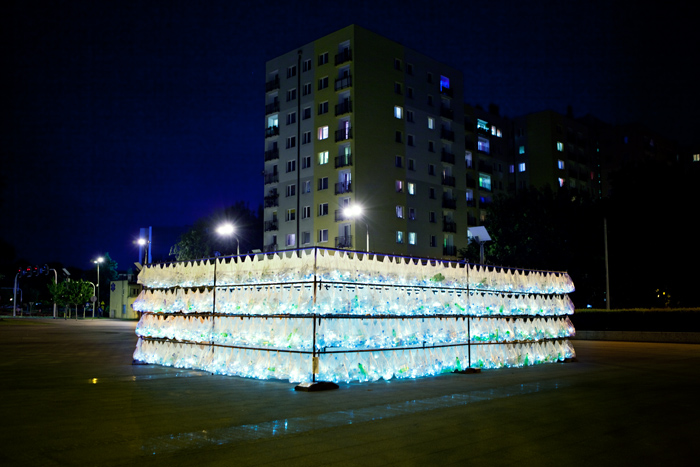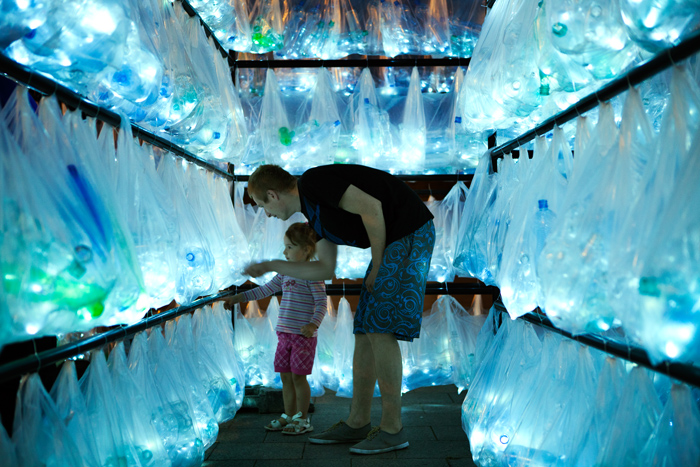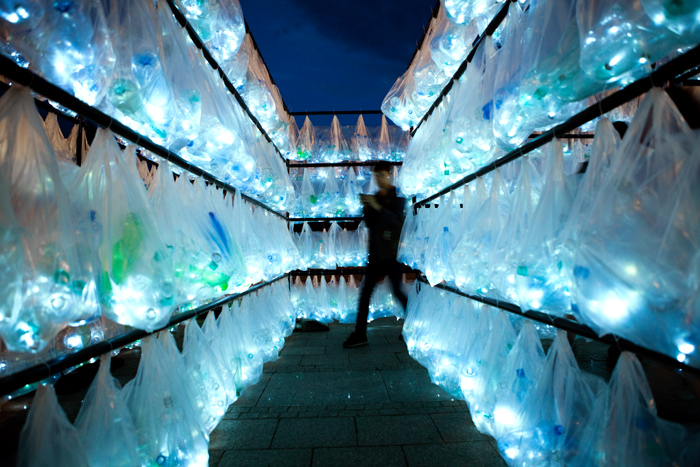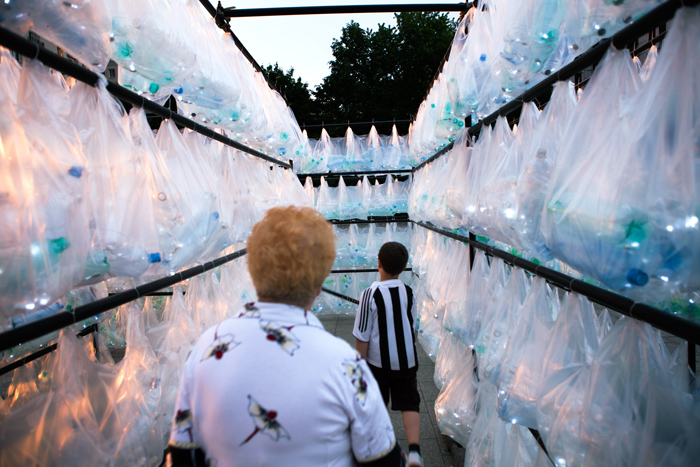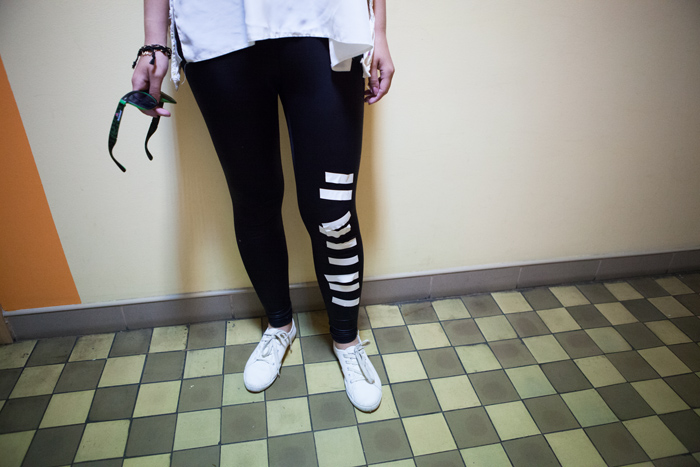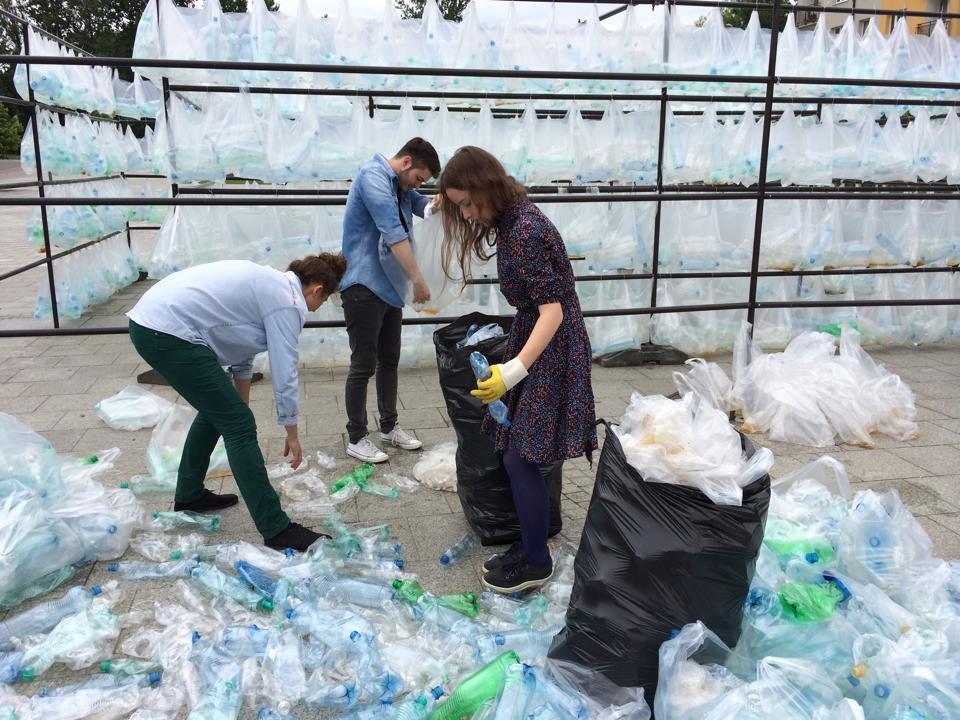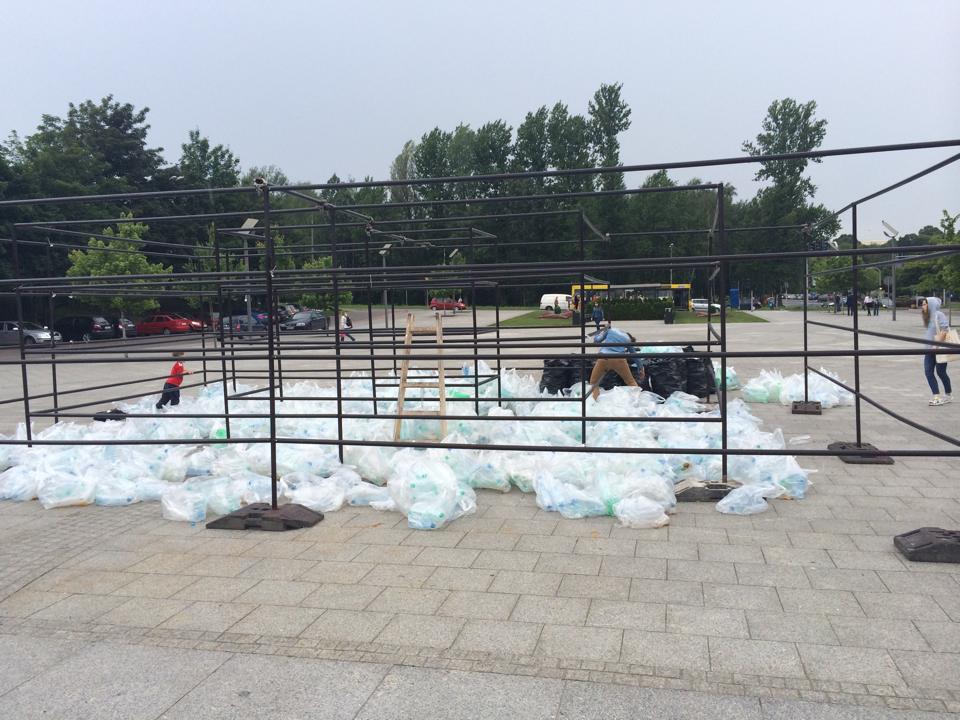Labyrinth of Plastic Waste / Laberinto de residuos plásticos. Shanghai 2023






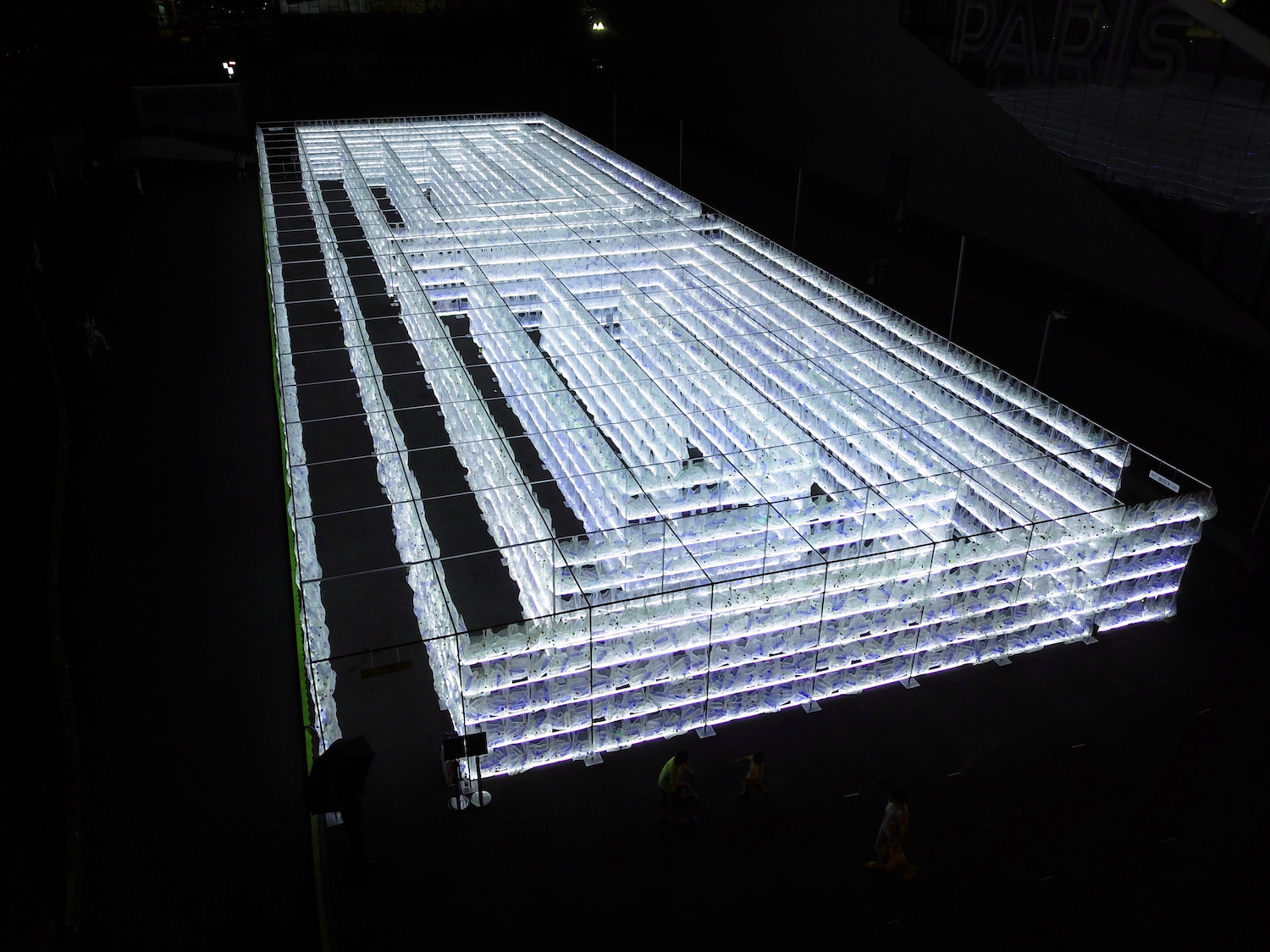

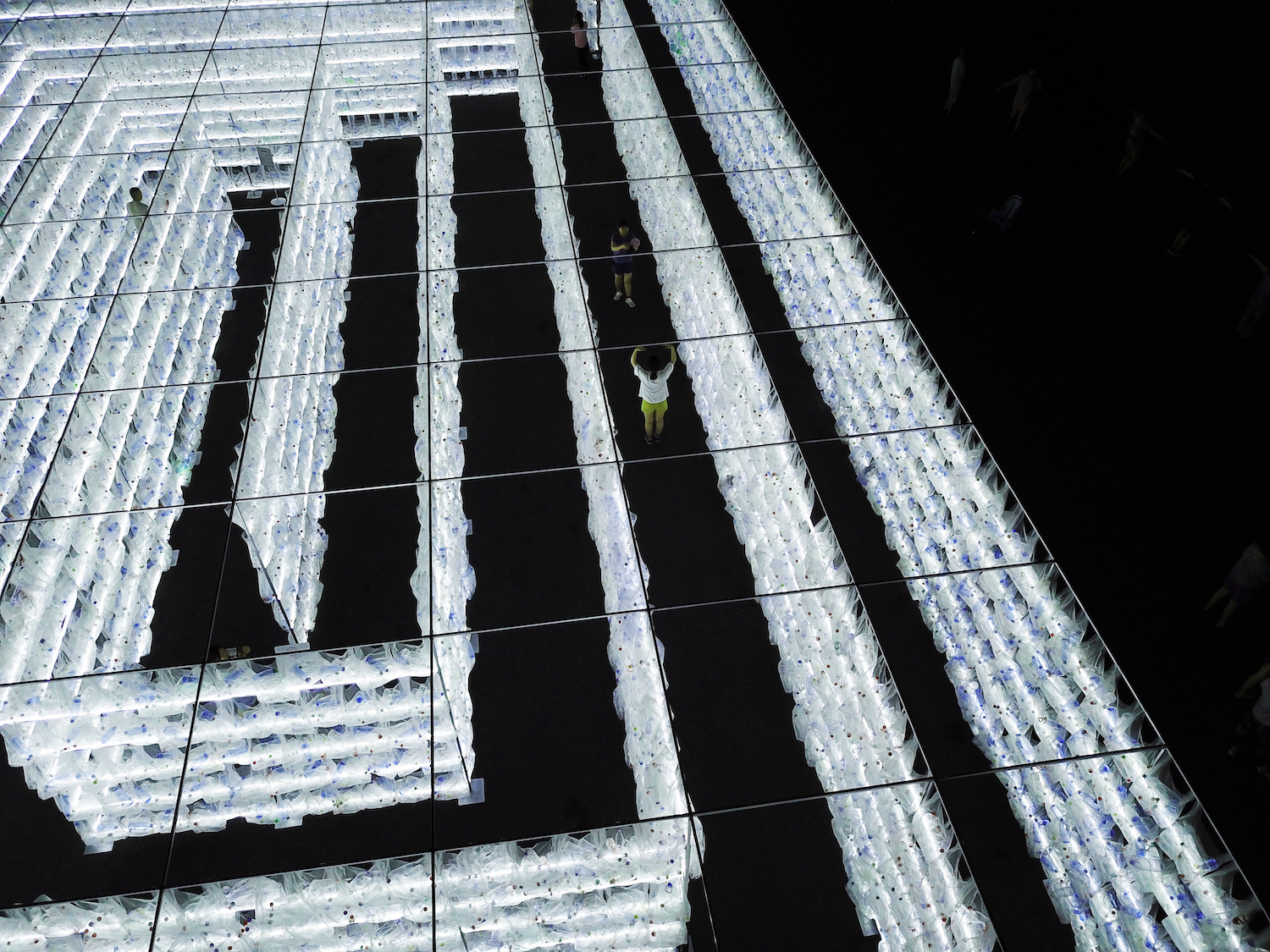





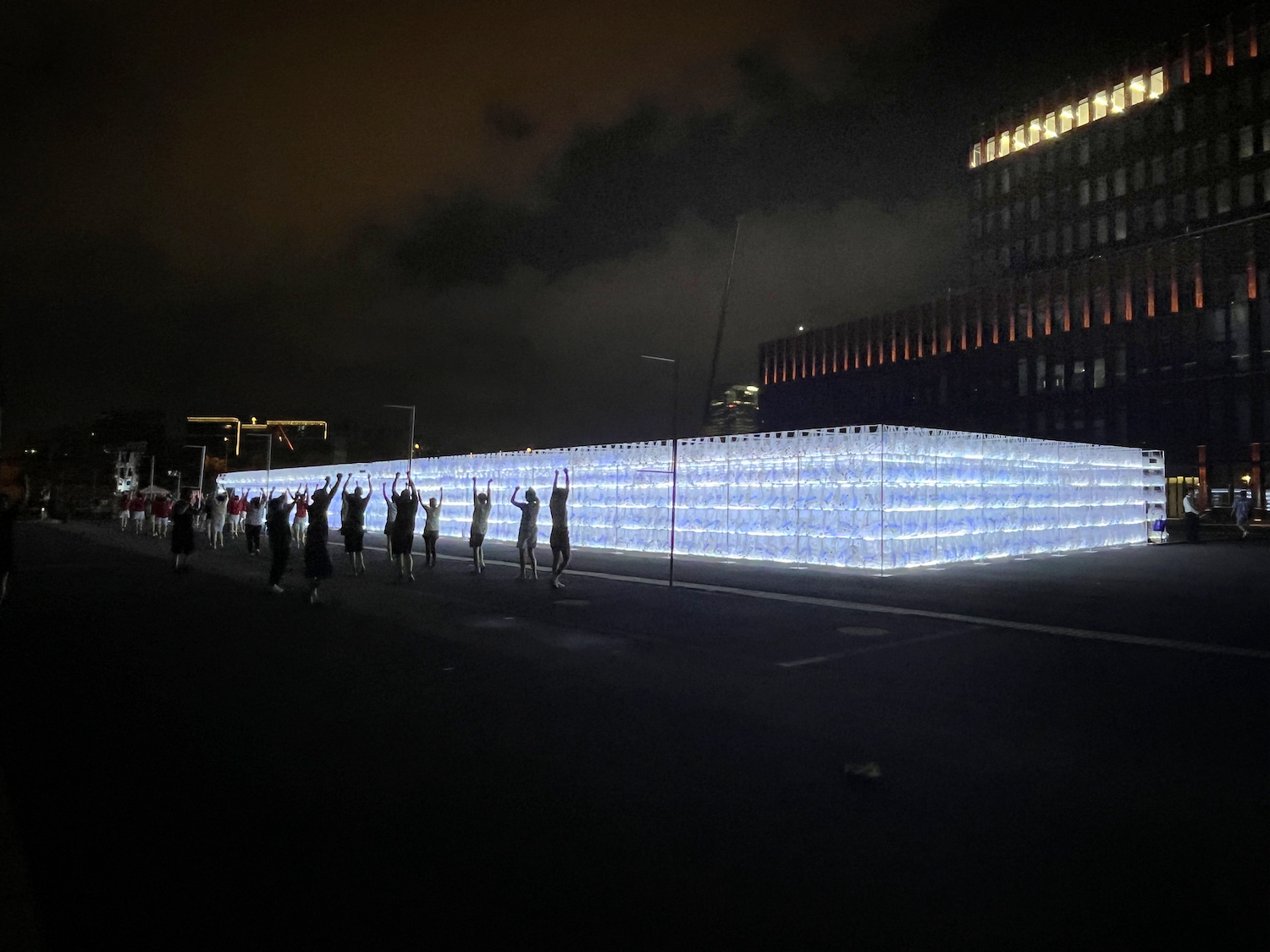
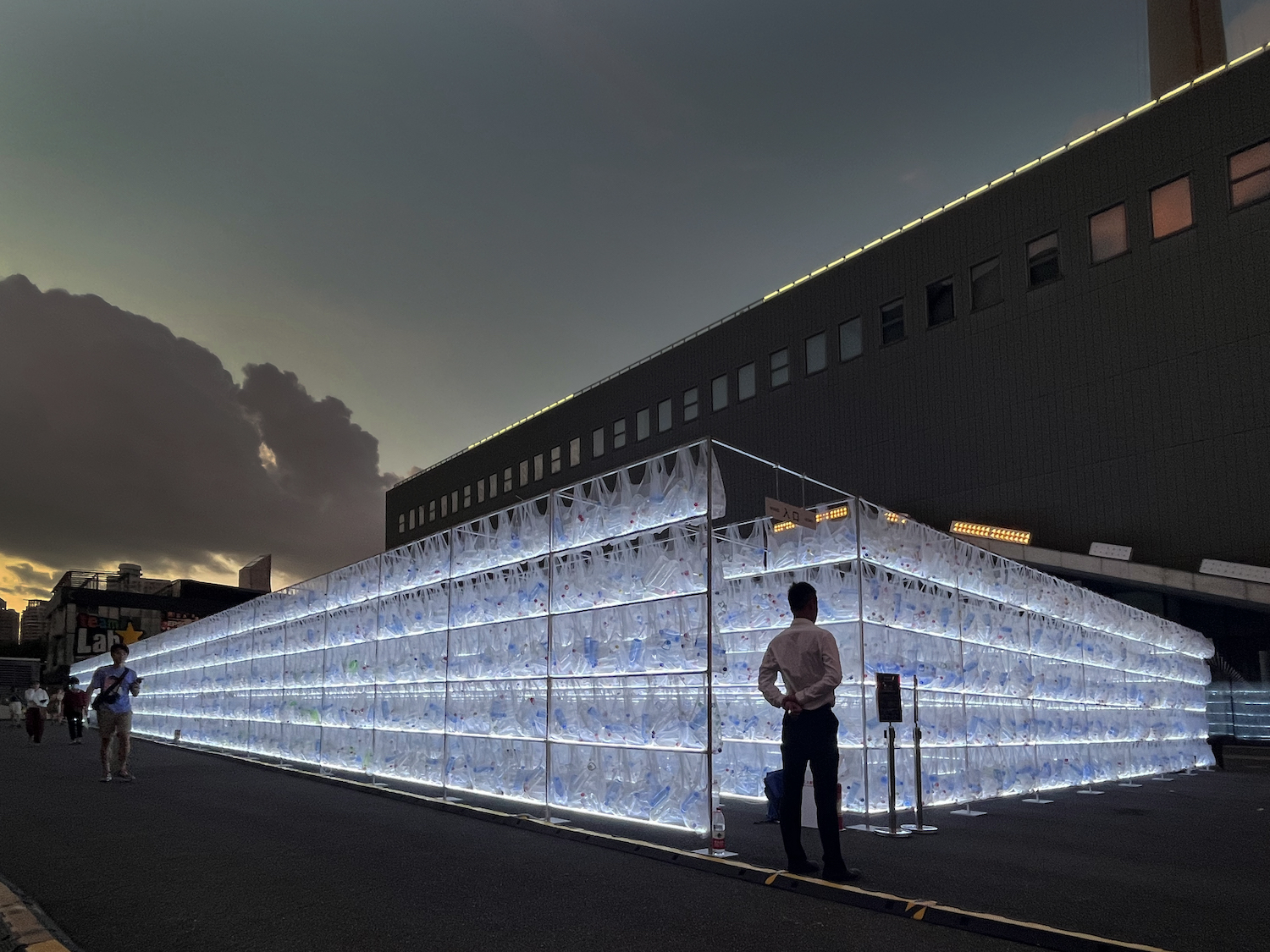
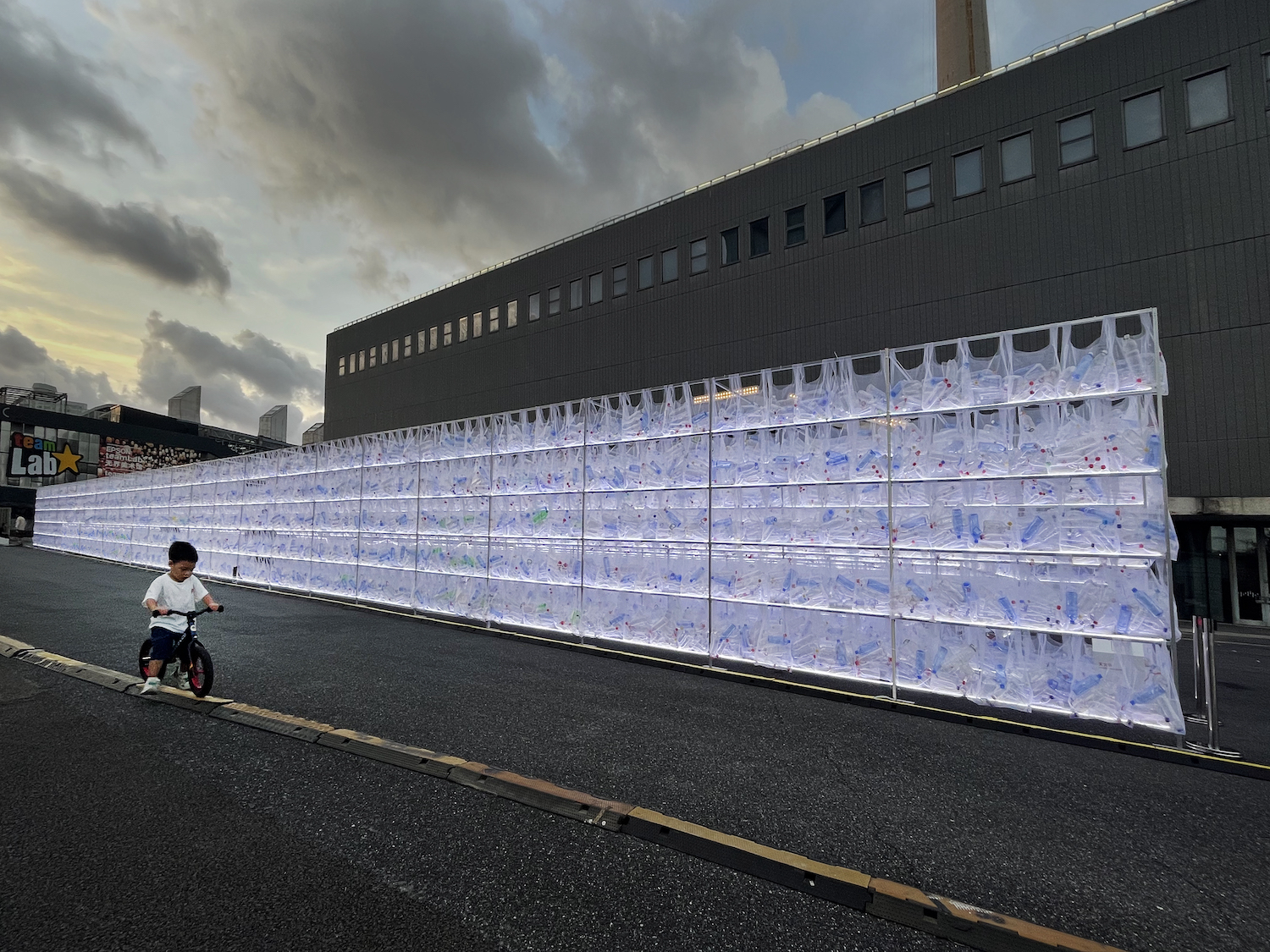
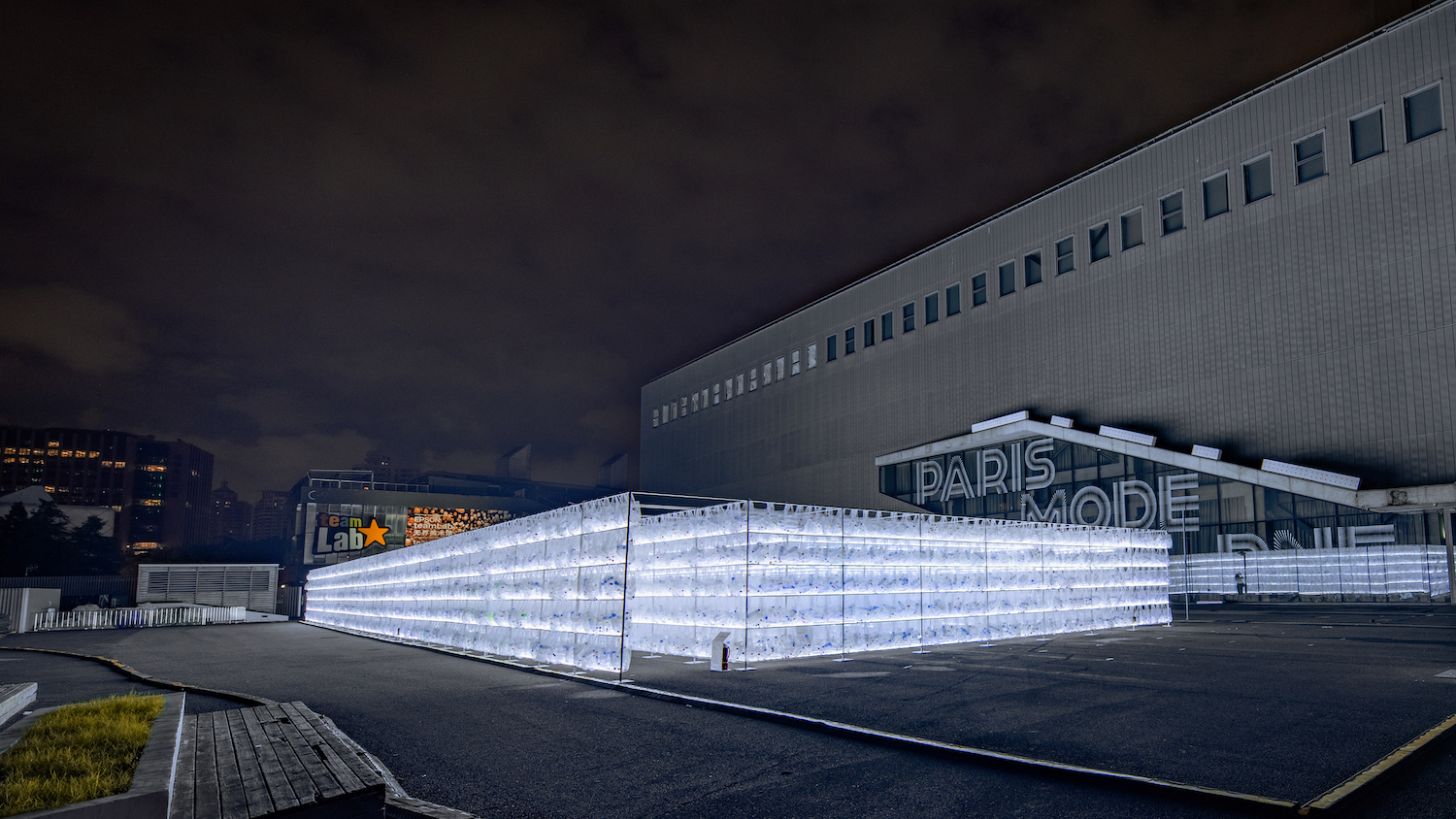
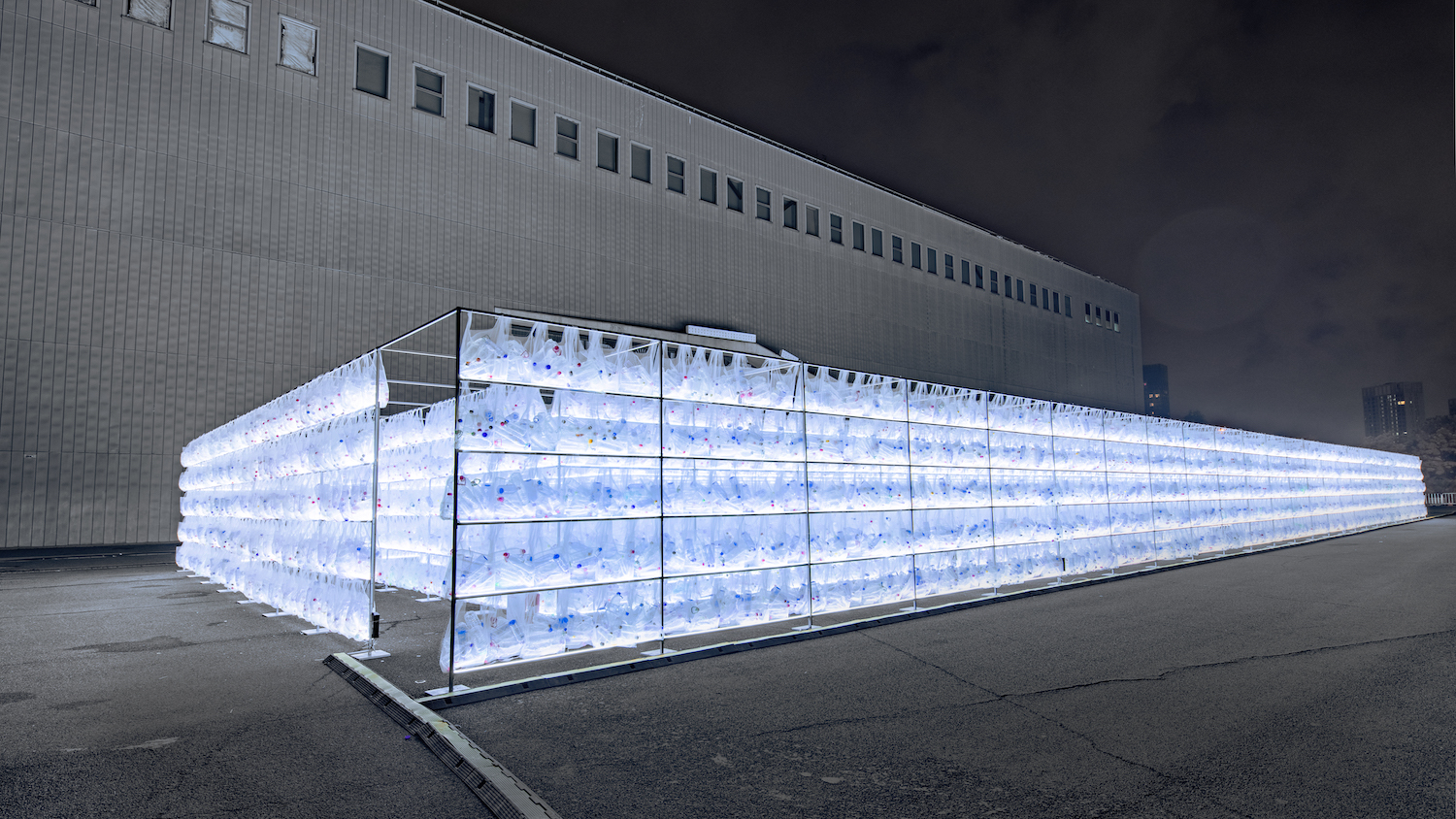
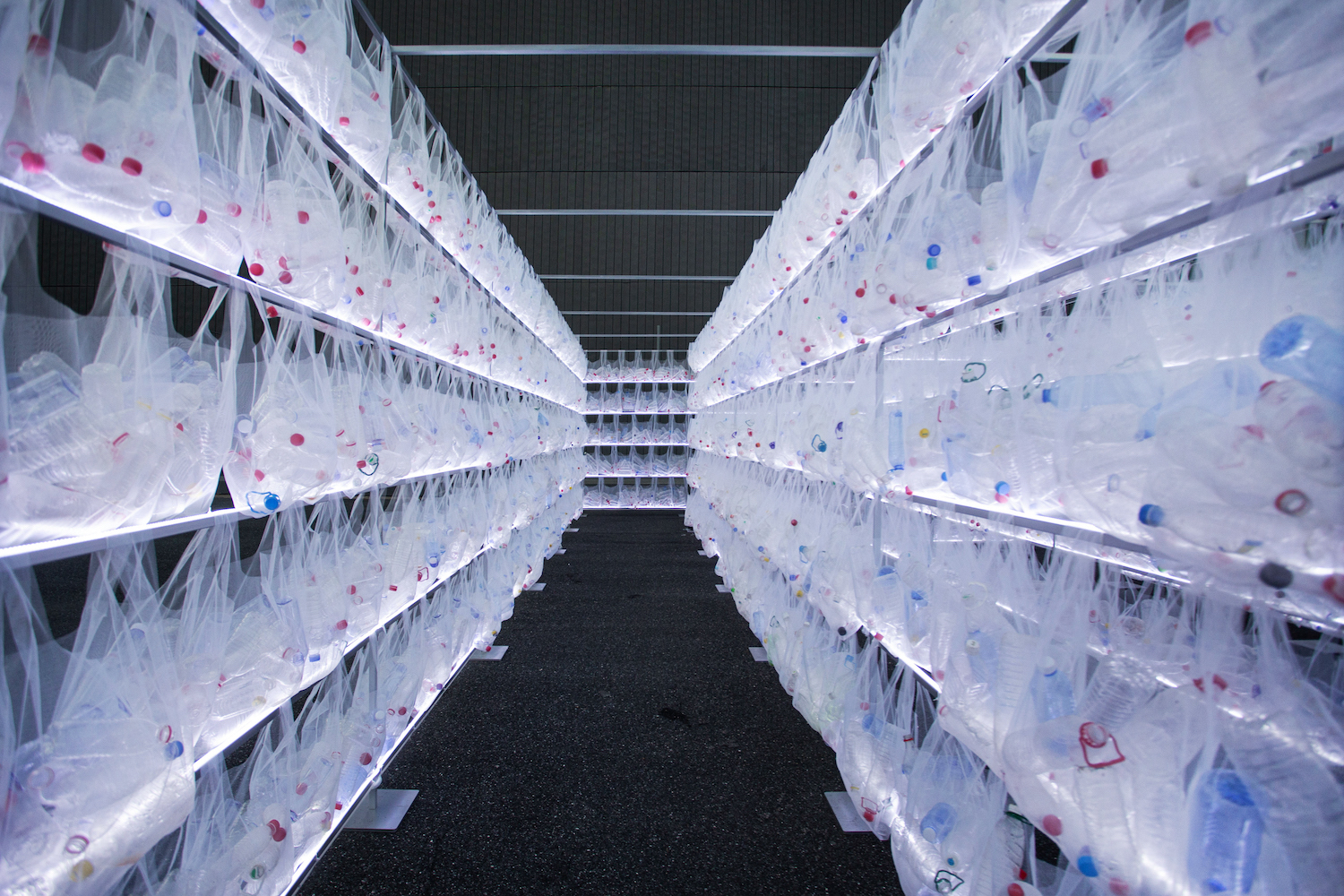

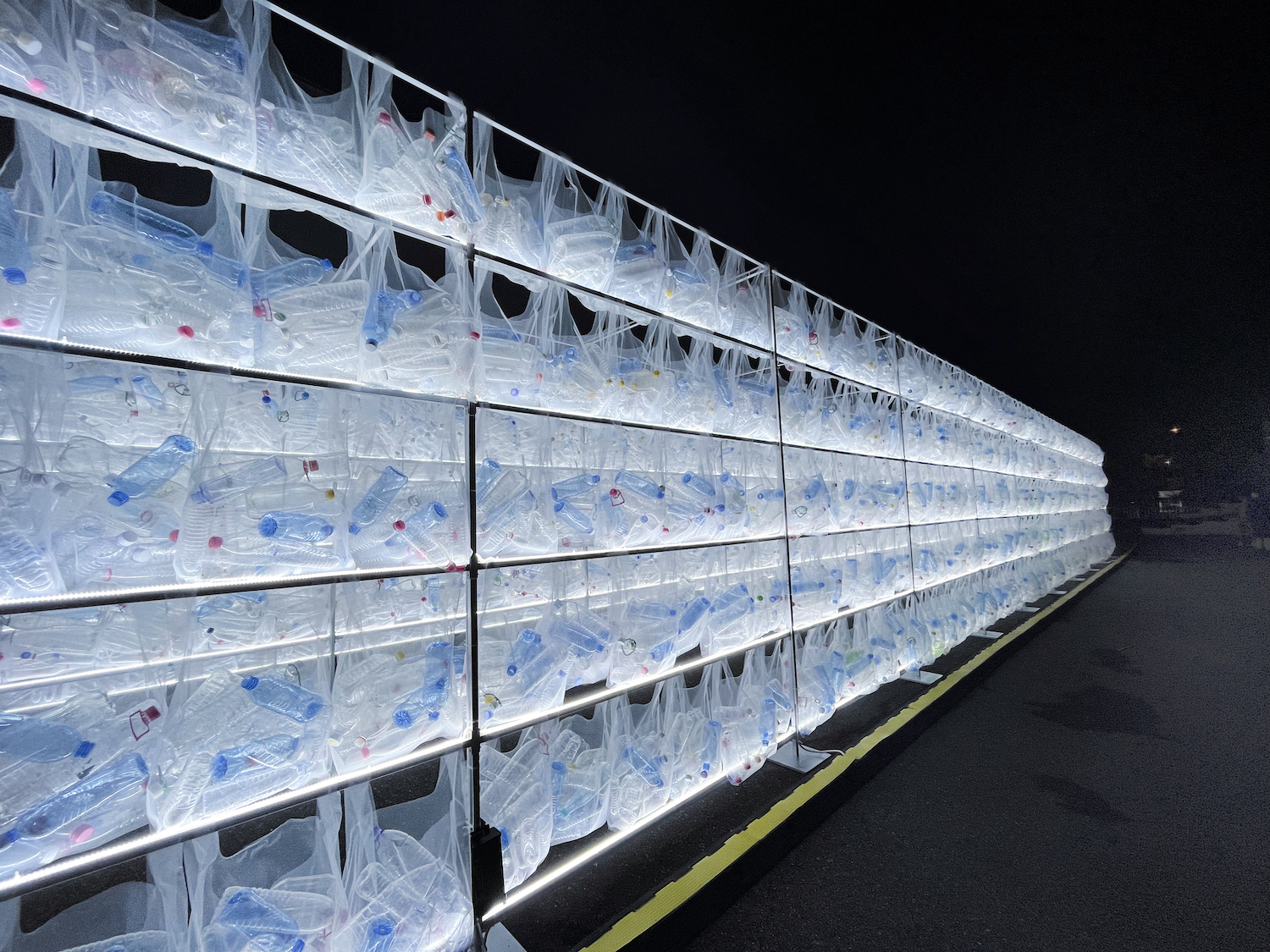




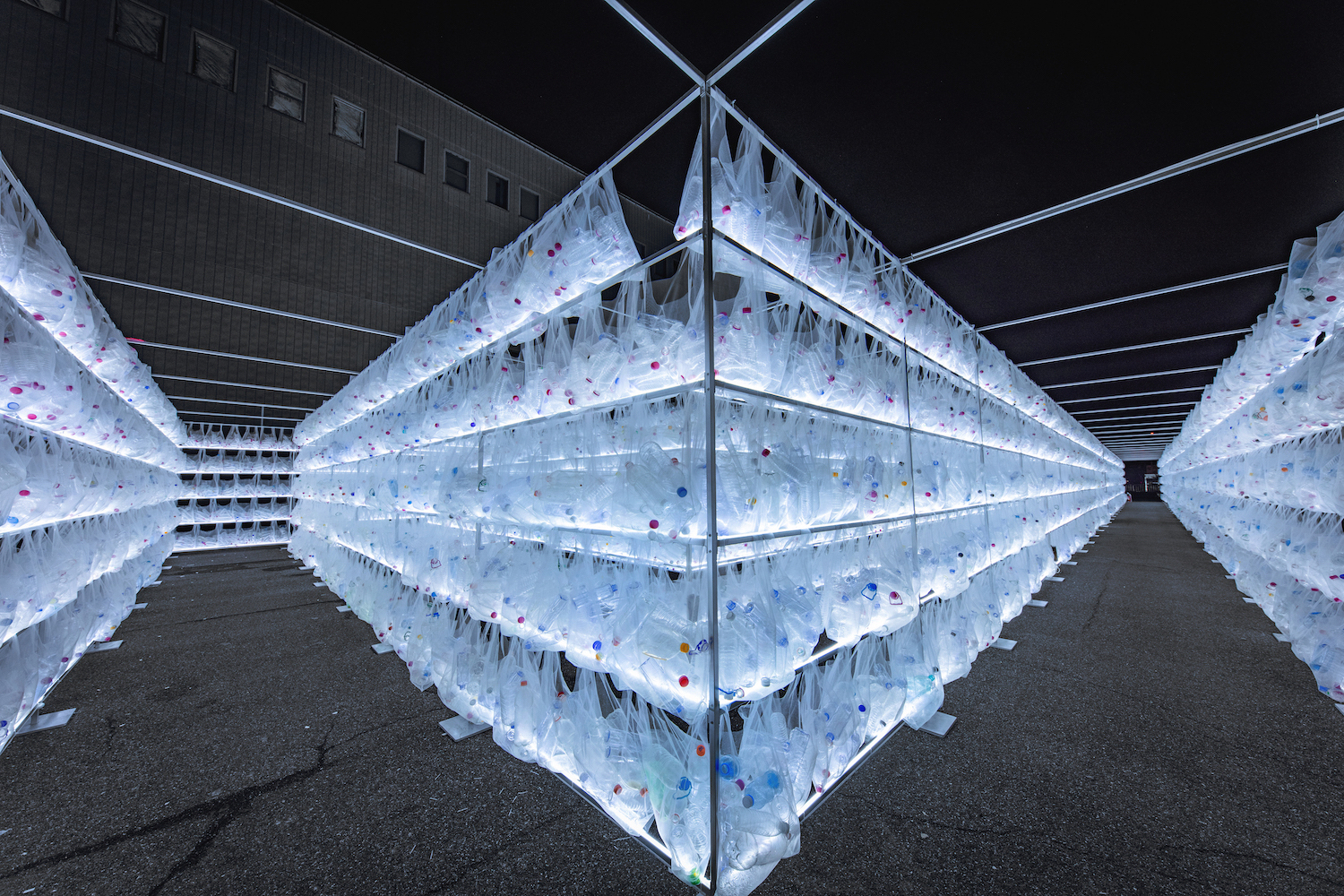


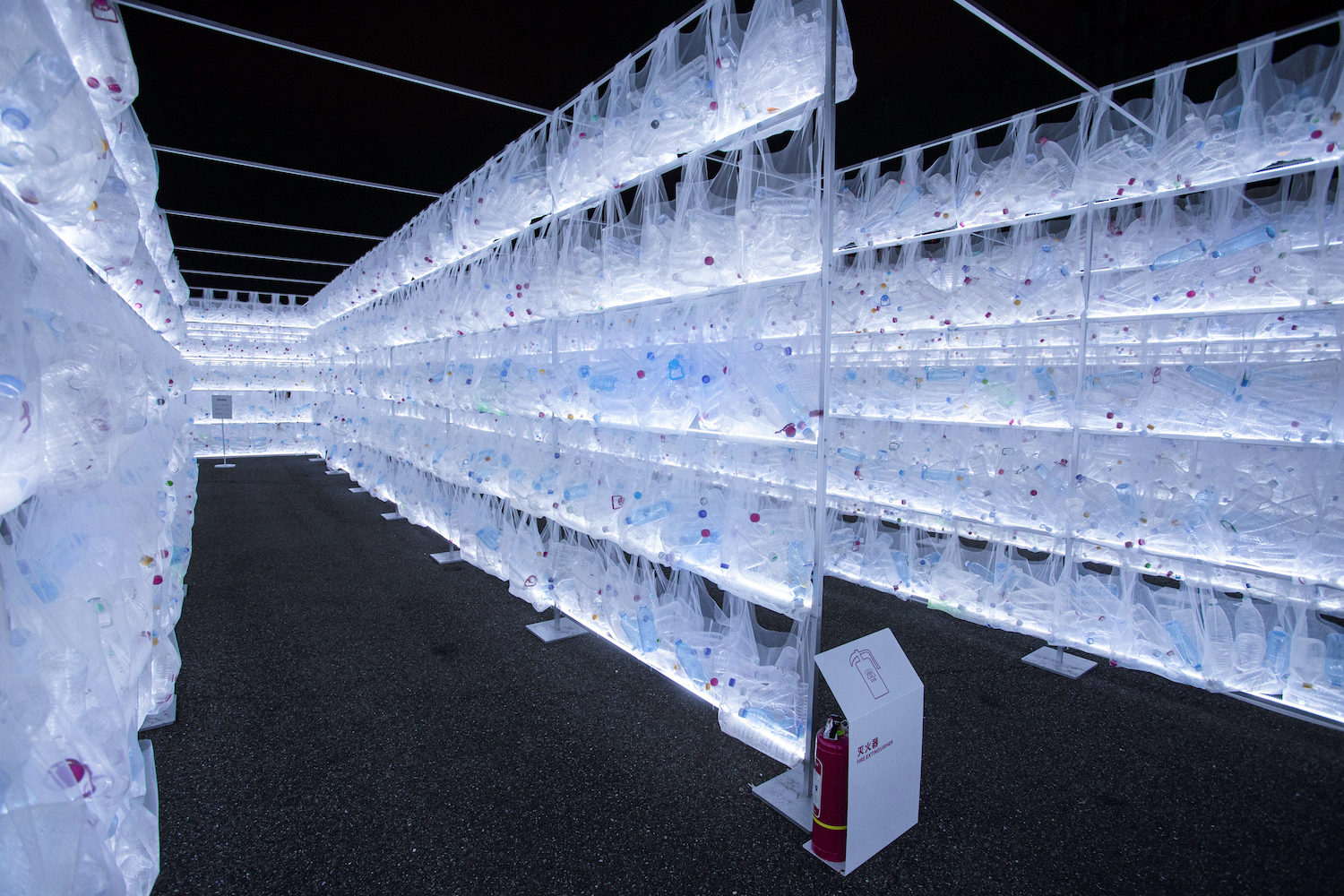
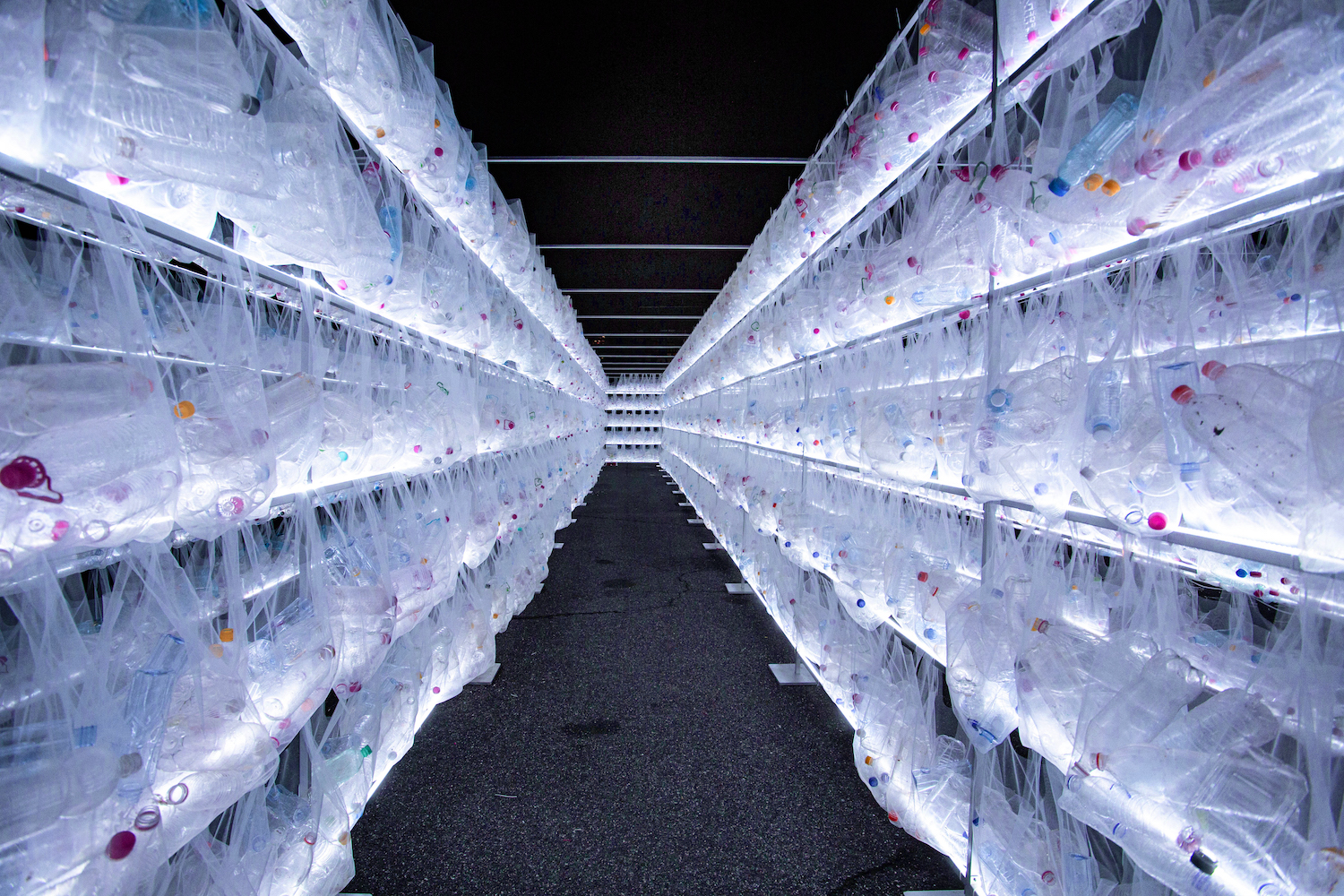













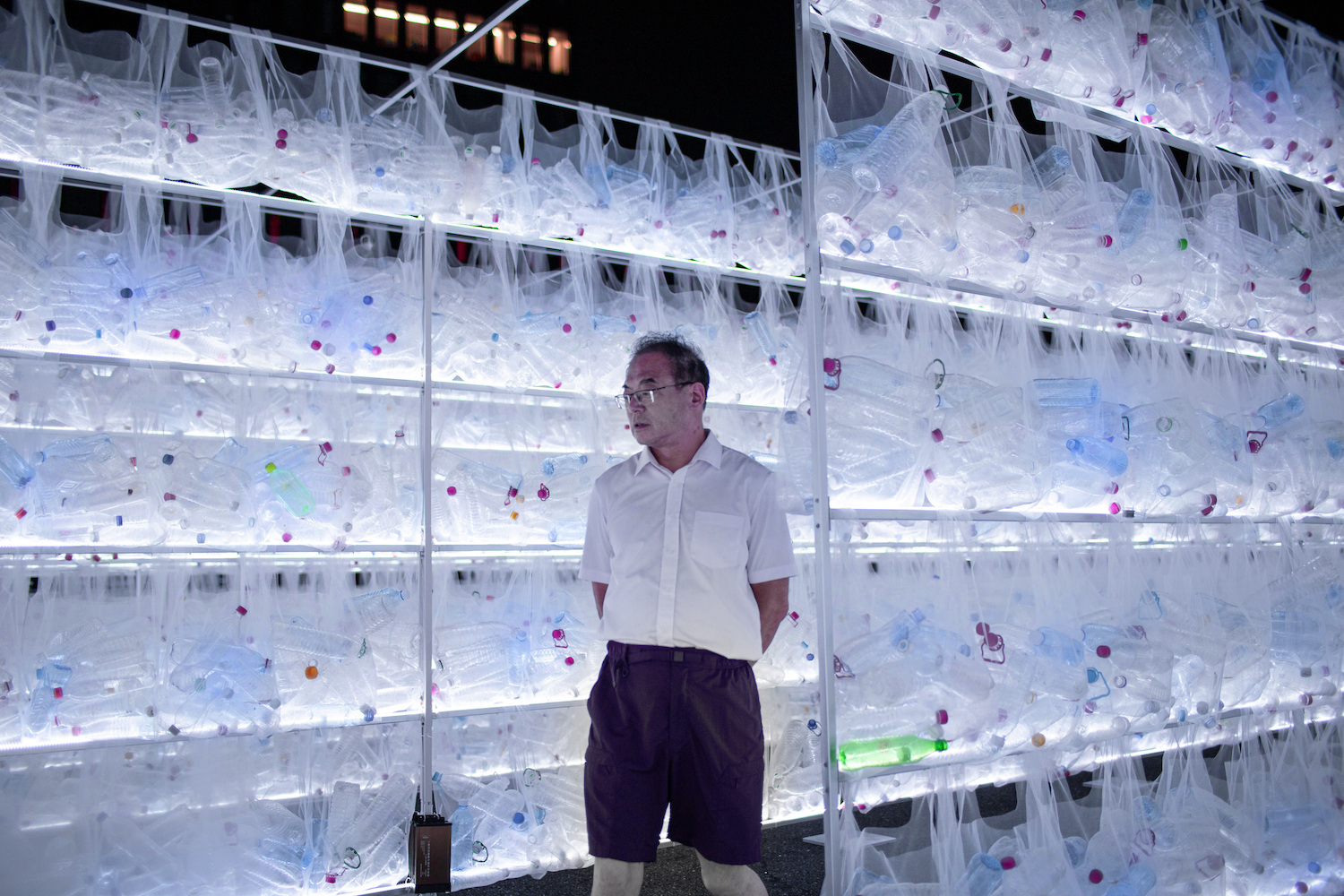


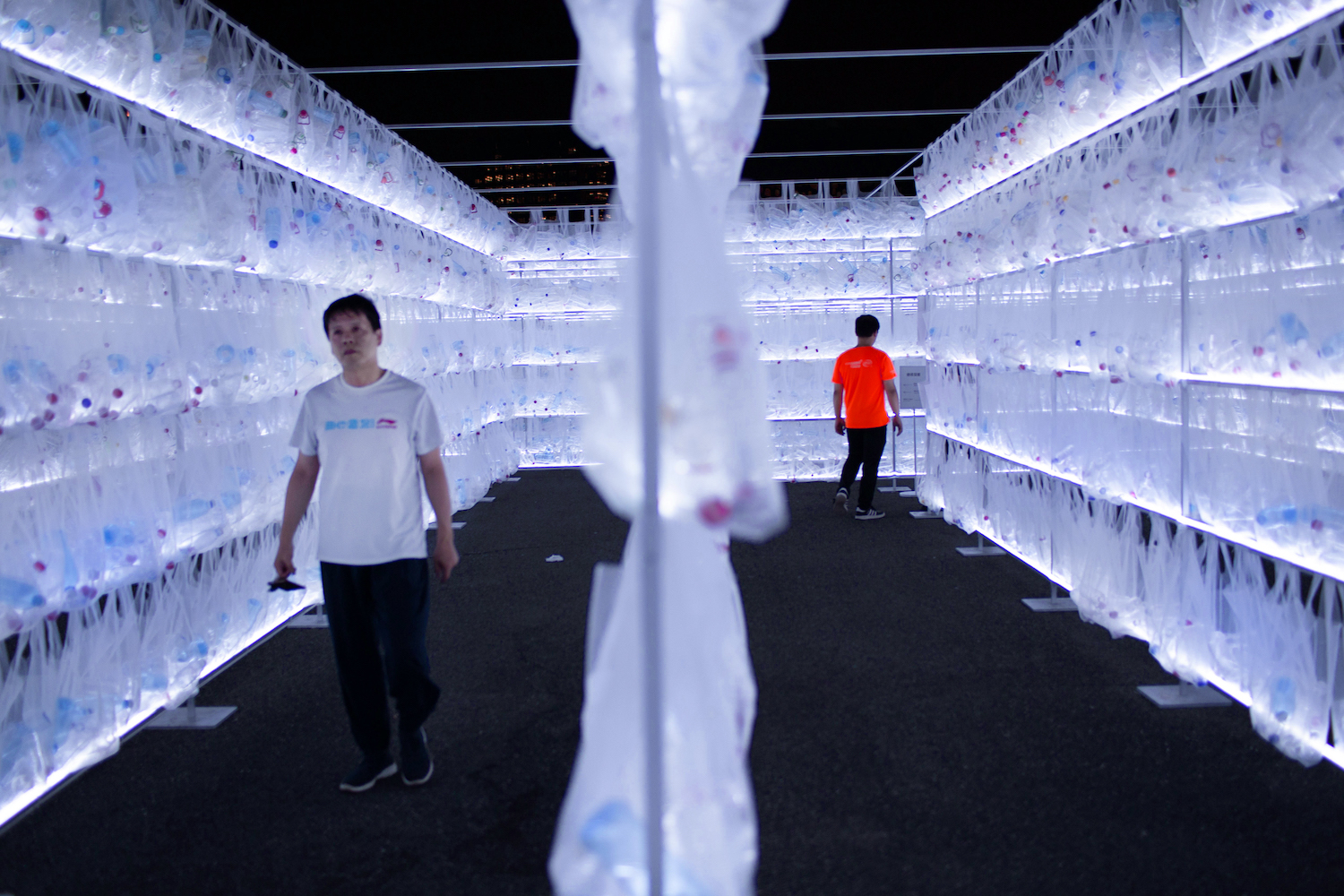


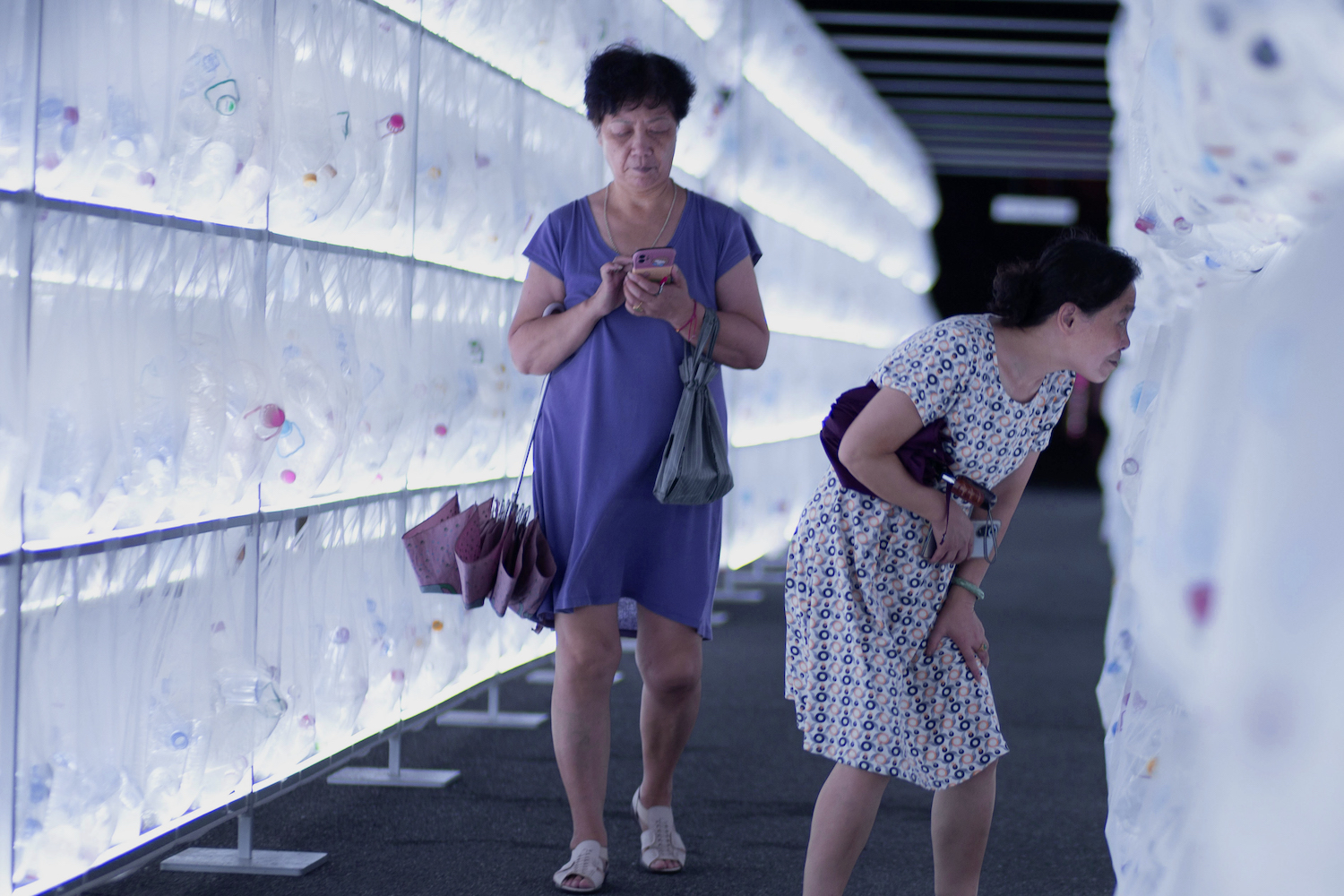


















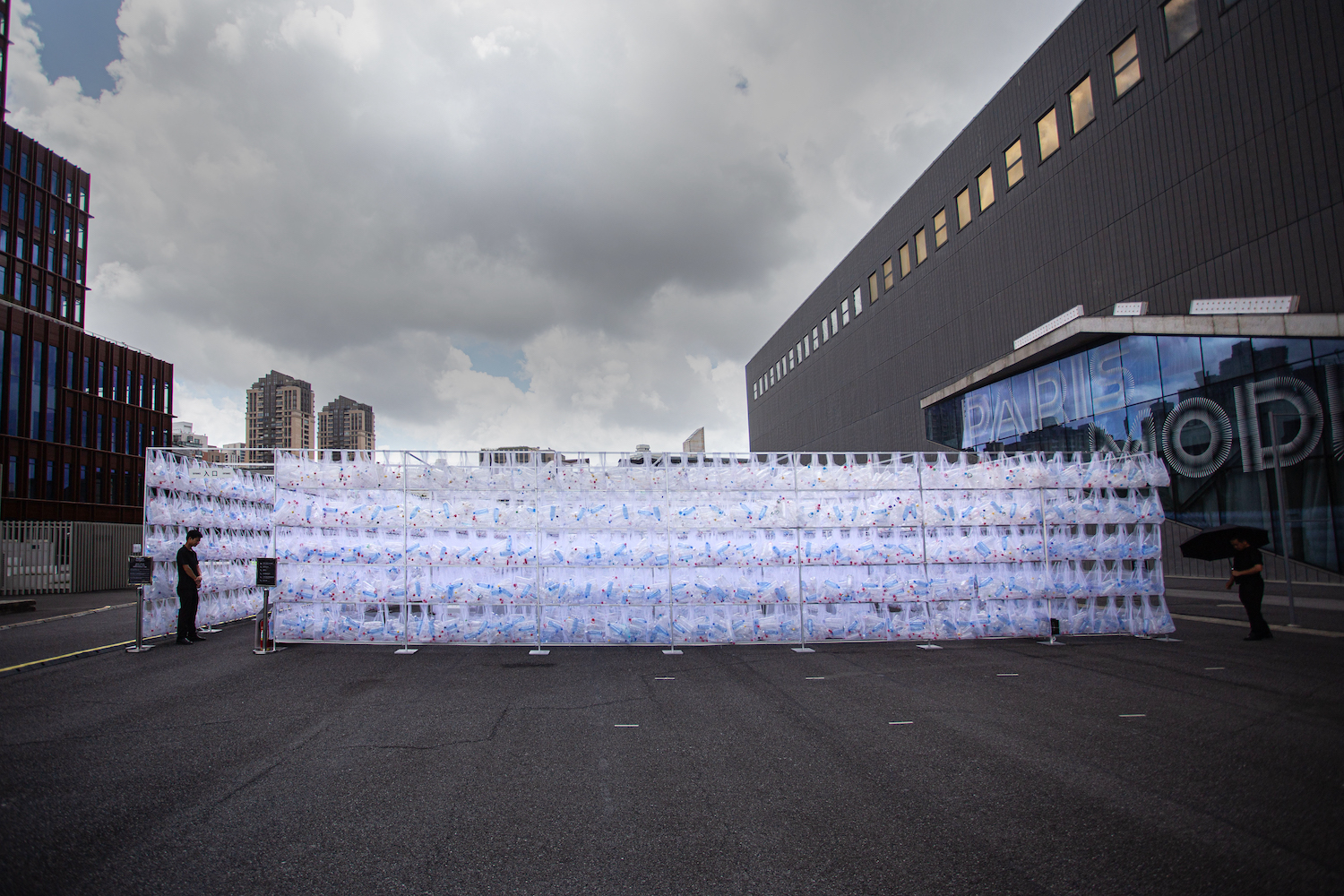


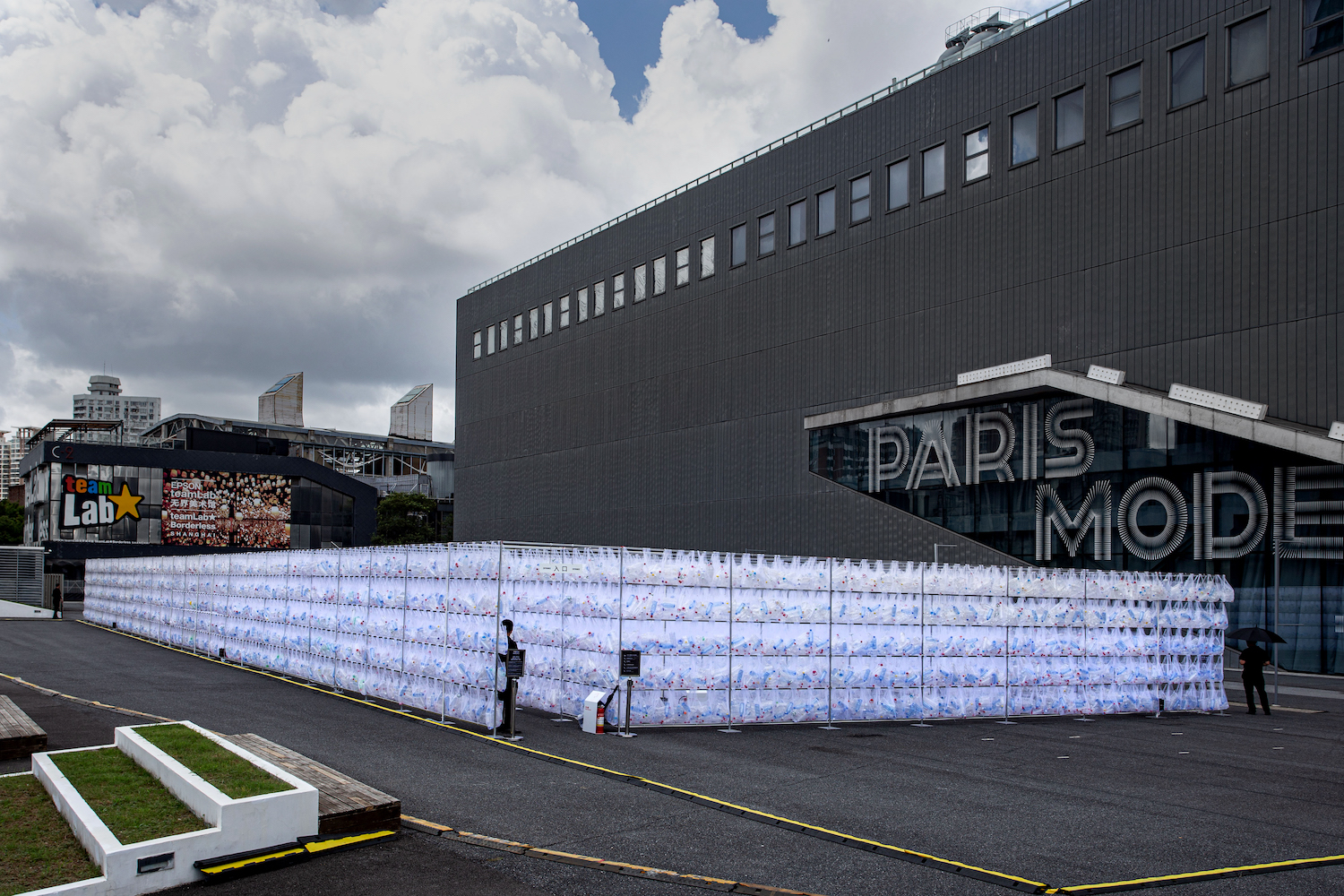
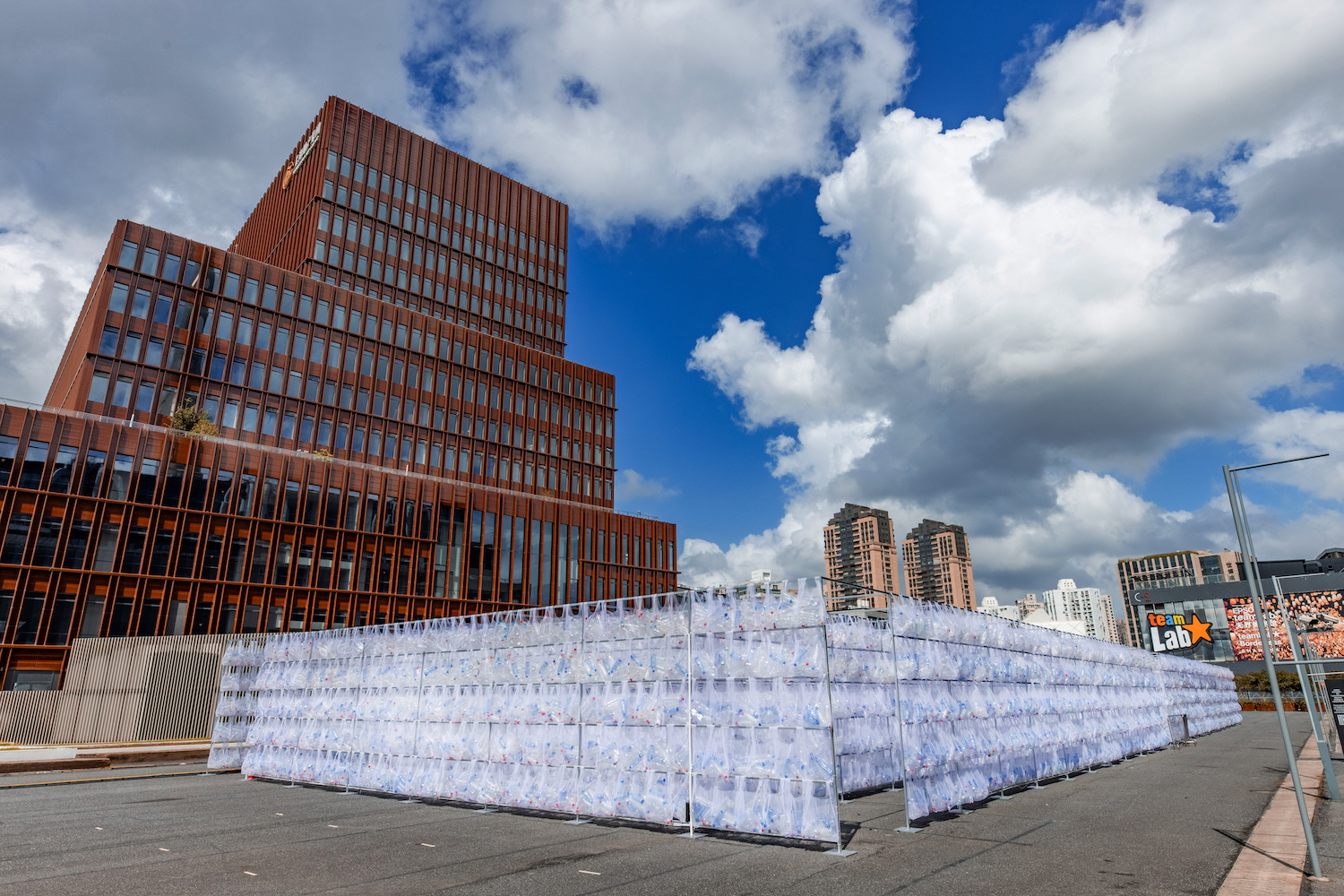









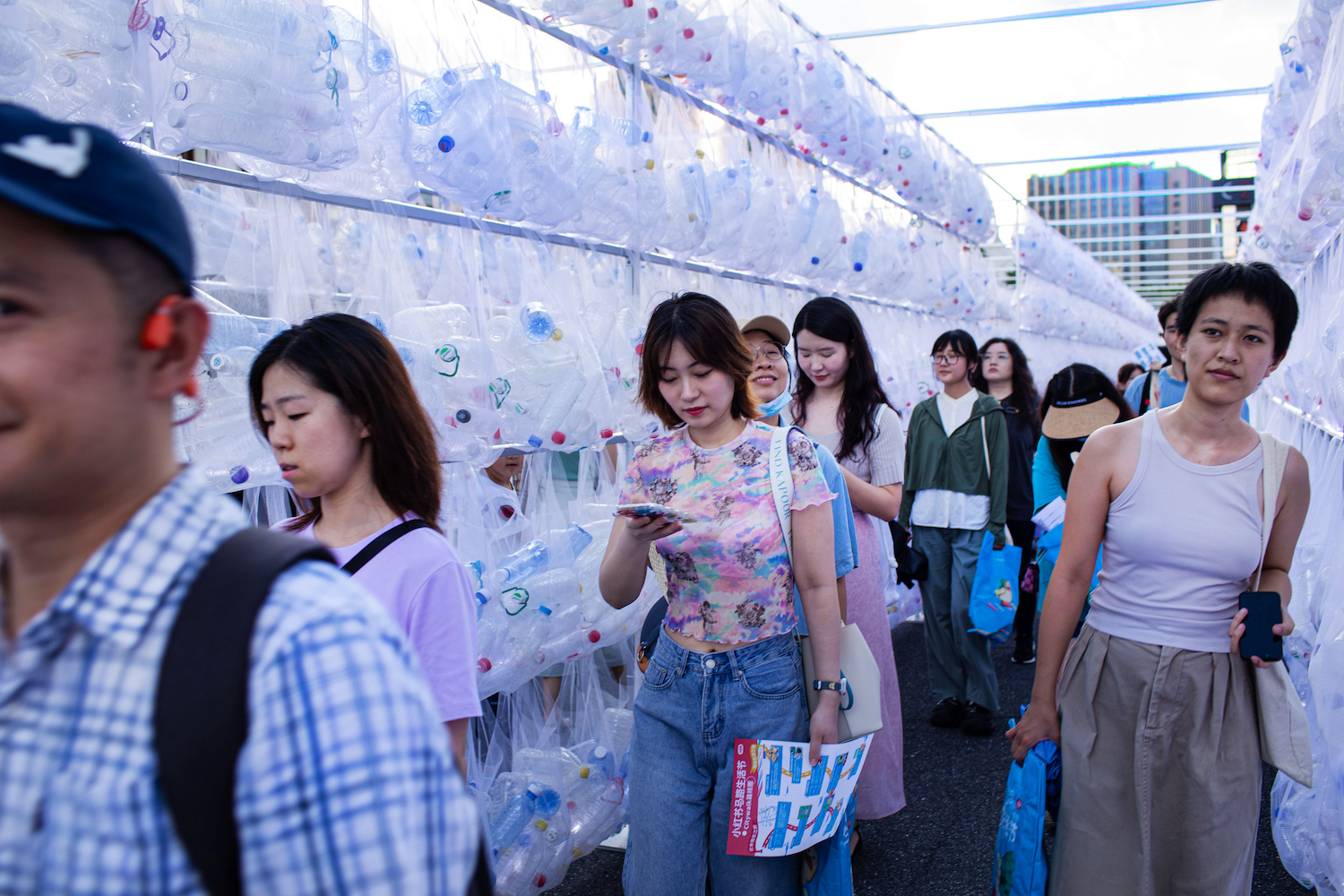












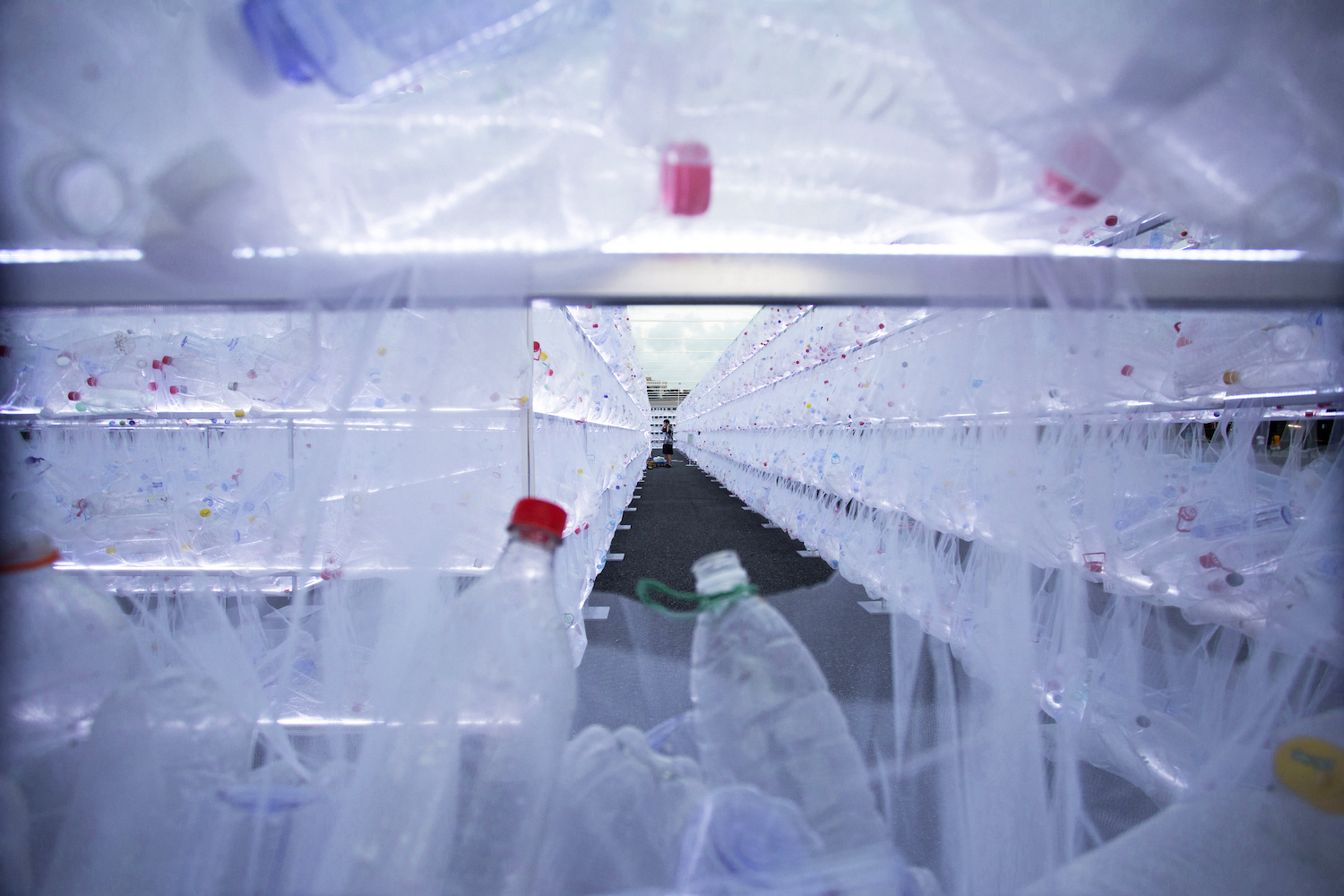

Last August, we were invited to Shanghai Roadside Festival to present one of our most iconic works Labyrinth of Plastic Waste which we have already installed in several cities around the world.
The idea of this work is still the same as on previous occasions: to bring attention, in a visual sensory manner, to our unsustainable consumption of plastic.
In order to do this, we built this huge labyrinth, the biggest one yet built, where visitors lose themselves in an intricate structure full of recycled plastic bottles which have been collected from the city. Our intention is to have this experience generate a thought, a conversation among the visitors which will hopefully bring them to reduce their plastic consumption and eventually make them aware of how they may dispose of it responsibly.
The first time we made this piece was in Poland back in 2014. We were trying to raise awareness of the need of recycling. However, 10 years later, it is clear that we must stop using it altogether. This looks like an impossible mission as governments lack interest and seem reluctant to pass laws to regulate this more potently. Unfortunately, priorities are still centered on the interests of companies, of businesspeople, of lobbies and of many voters whose main interest is to perpetuate their personal gain, disregarding the common good. As there is no restrictive law to penalize the rampant usage of disposable plastic material, any personal campaign may prove insufficient.
As regards our labyrinth, it was 40 meters long, 20 meters wide and 3 meters high (about 131 feet long, 65 feet wide, 10 feet high). Its length in a straight line was 400 meters (about 1,312 feet) and it took about 5 minutes to walk through it. However, we provided those who didn’t want to spend so much time inside with shortcuts, as the experience in there was quite oppressive.
The recycled bottles were collected by inviting people on social media to do so and by placing trash containers in public places for people to dump their waste there. In addition, volunteer groups and environmental organizations picked up trash at the beaches. Local packaging businesses also provided us with all the waste they could not use due to noncompliance with legal packaging requirements. We used a total of 90,000 units.
The structure was created with welded cross sections which were re-utilized once disassembled. At local workshops, we made the bags that contained the bottles with transparent tulle to avoid using more plastic.
The labyrinth was open to visitors from August 3 to August 13. It was located right in front of the Power Station of Art building. Once disassembled, the bottles were donated to companies that recycle plastic waste in order to manufacture new products. The remaining material will be used in new projects.
Our sincere acknowledgment to the recycling organizations: Ocean Cloud, Super Whale, HowBottle, One Planet Foundation, Circular Pi, Remakehub, Re:Generation, Bamboo Comet, for their help in obtaining the necessary amount of bottles to build the labyrinth.
Many thanks to Yuqi, Liya, Kris and Addrain from the PinKou Culture team who believed in us and our complex street art project and have handled the production wonderfully. Our thanks to Red, our sponsoring company. Special thanks to their curator, who stayed with us during the entire process, and to the museum for hosting us.
Last but not least, our appreciation to the photographers Yuzhe Xue and Melisa Hernández for capturing the magnitude and essence of our piece.
Time of installation: and installation: 5 days.
Damages: none.
Exhibition time: 10 day.
—————————
El pasado agosto fuimos invitados por el Roadside Festival de Shanghai para llevar a cabo una de nuestras piezas mas icónicas, «Laberinto de residuos plásticos» que ya hemos instalado en varias ciudades del mundo.
El sentido de este trabajos sigue siendo el mismo que en anteriores ocasiones, alertar de manera visual y sensorial sobre el insostenible consumo que hacemos de plásticos.
Para conseguirlo, hemos construido este gigantesco laberinto, el más grande hasta ahora, en el que los visitantes se ven obligados a perderse en una intrincada estructura abarrotada de botellas de plásticos recicladas y recolectadas del uso de la ciudad. La intención es que esta experiencia física, genere un pensamiento, una conversación entre los visitantes y ojalá, el propósito de reducir sus consumos de plástico, o como poco, poner cuidado a la hora de deshacerse de él de manera responsable.
La primera vez que hicimos esta pieza, Polonia en 2014, estábamos intentando concienciar sobre la necesidad de reciclar, pero casi 10 años después, ha quedado claro que lo primordial es dejar de consumirlo, algo que parece misión imposible por la falta de interés de los gobiernos, que se resisten a implantar políticas gubernamentales contundentes que legislen en este sentido. Desgraciadamente priman los intereses de la industria, de los empresarios, de los lobbies de poder y de muchos votantes interesados en perpetuar sus intereses personales, sin pensar en el bien común. Sin una legislación restrictiva que penalice el uso descontrolado de materiales plásticos de un solo uso, lo que hagamos a título personal parece insuficiente.
Centrándonos en nuestro laberinto, deciros que media 40×20 metros y 3 de altura, linealmente el recorrido completo era de unos 400 metros y se tardaba en recorrer aproximadamente 5 minutos, aunque pusimos algunos atajos para los que no querían pasar tanto tiempo dentro, que la experiencia era bastante agobiante.
Las botellas recicladas fueron recolectadas mediante convocatoria publica en redes sociales y situando contenedores en locales públicos en los que se invitaba a la gente a depositar sus residuos. Además grupos de voluntarios y asociaciones ecologistas limpiaron y sacaron material de las playas y por último, empresas de envasado locales nos proporcionaron todas las que iban a desechar por no cumplir los requisitos de envasado legales. En total usamos unas 90.000 unidades.
La estructura se creo con perfiles soldados que una vez desmontada la pieza se reutilizaron y las bolsas que contenían las botellas las hicimos en talleres locales con tul transparente, para evitar hacerlas de plástico.
El laberinto estuvo abierto al público desde el 3 al 13 de agosto, frente a la fachada de la Power Station of Art, y una vez desmontado, las botellas se donaron a empresas de reciclaje de residuos plásticos, para fabricar nuevos productos. El resto de material se usara en nuevos proyectos.
Tiempo de montaje: 5 días.
Daños ocasionados: 0.
Permanencia de la intervención: 10 días.


